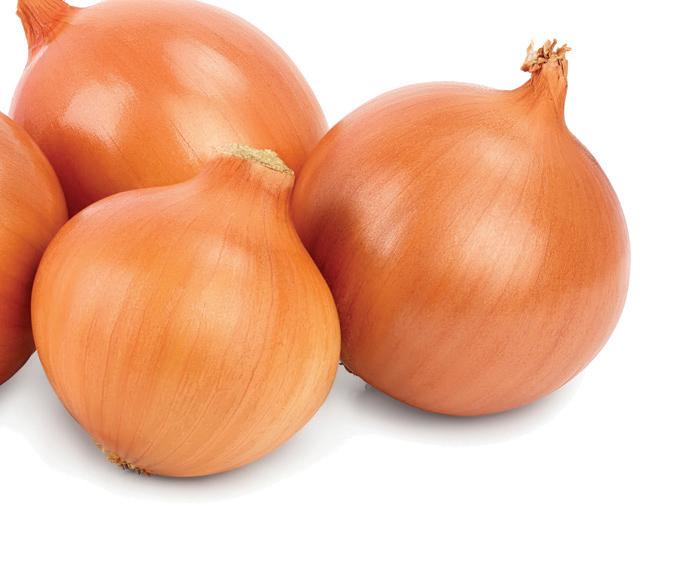













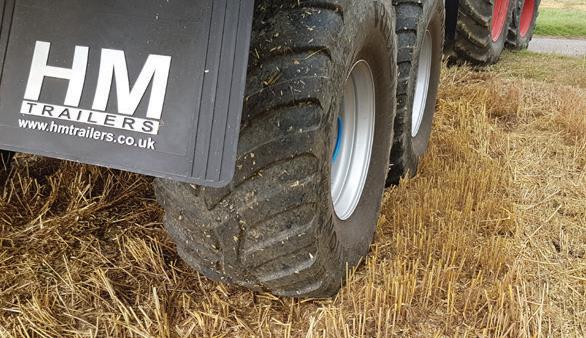


















EDITORIAL
Editor:
Johann Tasker | T: 07967 634971
E: johann@ruralcity.co.uk
Design:
Mark Shreeve | T: 01502 725839
E: mark.shreeve@micropress.co.uk
Advertisement production:
Jade Soanes | T: 01502 725840
E: jade.soanes@micropress.co.uk
ADVERTISING SALES
Chloe Miller | T: 01502 725844
E: chloe.miller@micropress.co.uk
Danny Lewis | T: 01502 725862
E: danny.lewis@micropress.co.uk
Dan Rice | T: 01502 725858
E: daniel.rice@micropress.co.uk
Mat Roffey | T: 01502 725854
E: mat.roffey@micropress.co.uk
Mark Tait | T: 01502 725803


E: mark.tait@micropress.co.uk
Last month’s long-awaited launch of the Sustainable Farming Incentive (SFI) should have been something to celebrate – but instead it was more of a let-down.
After months of delays, false starts and revised options for farmers, the scheme finally opened for applications on 18 September – but it is clear that the SFI is far from the finished article.

Midland Farmer is a controlled circulation magazine published monthly for farmers and growers in the Midlands (Derbyshire, Herefordshire, Leicestershire, Lincolnshire, Northamptonshire, Nottinghamshire, Shropshire, Staffordshire, Warwickshire, West Midlands and Worcestershire) or companies supplying goods and services to the sector. To be included on the circulation list, a farmer must have a minimum of 70 acres of land, or 50 dairy/beef stock, or 50 breeding sows/250 growing stock, or 15,000 laying hens/broiler chickens. Intensive horticulture units are required to have a minimum of two hectares.
If you no longer wish to receive this magazine, please email your name, address and postcode as it appears on the wrapper to adam.gunton@micropress.co.uk
© Countrywide Publications 2023
Published by Countrywide Publications, Fountain Way, Reydon Business Park, Reydon Suffolk IP18 6DH



T: 01502 725800
Printed by Micropress
Printers Ltd T: 01502 725800



Defra has made much of the fact that it is better to take a little longer to get things right, rather than rushing and getting things wrong. But that is little consolation for farmers who found they were unable to complete their applications because of glitches with the computer system.
These glitches were meant to be resolved – in fact Defra said they had been. But many applicants found that they weren’t – or at least only partially, with further fixes needed.
Thousands of farm businesses of all types and sizes had registered their interest to begin their applications. Defra had even scaled up support to ensure a good service for farmers. But it wasn’t up to scratch, with growers and livestock producers struggling to make sense of it all.
Unsurprising then, that the NFU waded in to warn that the roll-out of Defra’s new farm support schemes remain “a million miles” away from the government commitments.
Many farmers already face a cash-flow crisis this winter, says the union, fuelled by high inflation and rising input costs. And all this on top of £720m in cuts to direct support as the phase-out of the Basic Payment Scheme (BPS) continues.
To ease the pain, the government has pledged that the first farmers will start to receive their SFI payments before the end of the year. It says they will receive an advance payment of 25% of their money in ‘the first month of their agreement’.
While the money will be welcome, it won’t compensate at all for BPS losses. And the NFU says it expects most farmers will still have to wait for a wider roll-out of the SFI before they can sign up. Defra should come clean on how long this will take. As we have said before, ongoing delays are bad for farmers – and bad for the environment too.
Johann Tasker, Editor•
• Cash-flow warning this winter
• Payment pledged before 2024
Payments to farmers who join the government’s Sustainable Farming Incentive will be made before the year-end, says Defra.
The pledge follows NFU criticism that the government is forging ahead with the phase-out of the Basic Payment Scheme without giving farmers the opportunity to recoup at least some of the lost income because the SFI still isn’t fully up and running.

NFU president Minette Batters says the loss of the BPS is a major reason many farmers are facing a cashflow crisis this coming winter.
The roll-out of farm support measures including the SFI remains “a million miles” away from government commitments, she warned.
‘Essential support’
“Farmers will be pleased government has listened to them, but the backdrop to these pieces of good news is that many farmers continue to face a bleak end to the year, with money they were promised, and rely on, not coming.
“While we have been working hard to prepare for changes to the essential support schemes that support farming and environmental management, delays in the roll-out of the new scheme, coupled with reductions in the current scheme, mean most farmers have been unable to access the new SFI while facing significant holes in their finances from the withdrawal of BPS.”
A revised SFI opened for applications last month. It aims to pay farmers to take actions that support food production, farm profitability and resilience, whilst protecting and enhancing the environment.
The 2023 offer has been expanded and made more flexible, says Defra. It says it made the move in response to
farmer feedback and now offers more than twice as many new SFI actions as originally planned.
Some 23 paid-for actions are on offer. They include hedgerow and nutrient management, farmland wildlife and low input grassland.
Further improvements to the scheme mean farmers can choose what combination of actions are right for them, says Defra.
Thousands of farm businesses of all types and sizes have registered their interest in the SFI, says the government. Invitations to apply have been issued and scaled up to get applicants on board and ensure a good service for farmers, it adds.
Farmers with a live SFI agreement before the end of the year will receive their first quarterly payment – typically worth 25% of the annual value of their agreement – by the end of this year. But this amount will still be dwarfed by the lost BPS income.
Defra says payments will typically be made in the first month of an agreement starting. And it says there will be no cap on what individual farmers can do in the scheme or overall numbers of applications.
Defra secretary Thérèse Coffey said: “We’ll be working to get as many farmers onto the scheme as quickly as possible, so that they get payments in their pockets and are rewarded for the enthusiasm with which they are embracing this scheme.”
Rural insurer NFU Mutual is reminding farmers to make sure their businesses are resilient to winter storms.
It comes after the first storm this season –Storm Agnes – brought winds of up to 75mph to parts of the UK last month, damaging buildings and causing localised flooding, with farms affected by fallen trees and falling debris.
NFU Mutual rural specialist Hannah Binns said: “With more storms likely to hit between now and the end of winter, we are urging everyone to plan ahead and take great care if working outside in stormy conditions.
“Safety for farmers, family members and workers should always be the number one priority and while fully understanding the pressures farmers are under, it is vital they avoid taking
risks which could lead to injury or fatalities.”
Farmers should keep up-to-date with weather warnings and have insurance details to hand, said Ms Binns. They should avoid being near barn doors in high winds and tell someone of their location when working alone, she added.
“There are a number of actions farmers can take while the weather is calm, such as identifying safer ground to move livestock to in the event of flooding and carrying out necessary repairs to buildings, fences and walls.
“It is also worth checking alternative fuel and power sources in case of a power cut.”
NFU Mutual local offices are placed on standby to progress repairs after winter storms. This includes making emergency payments and settling simpler claims immediately.
Promises are not being delivered
September finally saw our drainage season really kick off. Harvest was pretty much done and the weather Gods saw fit to give us a bit of late sunshine. This has meant that our 15:15 has been non stop with works for both our more regular clients and some new ones alike. One new client is the neighbour of a farm out Hanbury way where we drained last year and was having further works this year. The neighbour saw us and came over to ask if we could drop in on him whilst we were in the area after actually seeing the benefit of a well planned and installed drainage scheme.

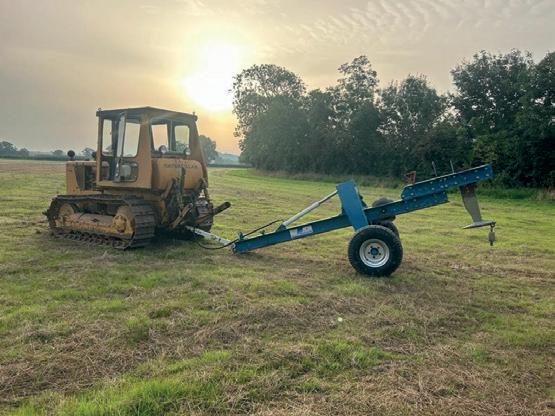
A drainage scheme alone is only any good if the water has somewhere to go. This is why keep ditches are extremely important and need to be kept clear of vegetation and silt, they should be checked every few months and cleared at least every 12 to keep the drains running free and clear.



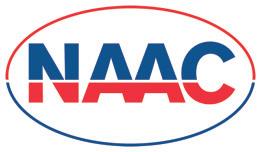
Following on from having a drainage scheme installed it is worth considering mole ploughing, especially if the soils have a large clay content or are suffering from compaction with years of heavy machinery driving over it. Mole drains are put in perpendicular to the drains as a kind of “belts and braces” for surface water percolation. Mole drains are put into the depth of the gravel which gives surface water a direct route through to the drains. Our CAT 95E was on another job, this client was in a hurry so we broke out the CAT D4 which was perfect for this land.



Midland farmers can receive funding and free specialist advice to drill cover crops this autumn – thanks to Severn Trent’s Environmental Protection Scheme (STEPS).
The water company is paying growers up to £175/ha to match-fund seed purchases. It is also offering free support from its team of agricultural advisers, as well as on-farm soil testing and advice via webinars.
Severn Trent principal catchment management scientist Alex Cooke said: “In the last round of STEPS grants, we funded over 5,500ha of cover crops –which are vital tools in building healthy soils and improving water quality.”

“We always encourage farmers to speak to their local agricultural adviser before applying for any match funded STEPS options. The team is on-hand to discuss the most suitable cover crop options for your farm.”
Match funding is available to farmers in priority catchments to help pre-

On Farm Advice (SOFA) visits are of fered for support in areas beyond Severn Trent’s own expertise.


Seed mixtures recommended by the scheme aim to offer the most value for soil health and future field productivity, said Dr Cooke. “Having this information from your adviser will also improve the likelihood of your application being successful.”




Cover crops help prevent soil damage during the wetter months, which is key to maximising future crop
Phacelia is just one cover crop funding option.

Cover crop funding includes:
• Mustard
• Oil radish
• Winter turnip rape
• Radish/phacelia/oat mix
• Mustard/oat/phacelia mix
• Forage rye/vetch mix
• Under sowing maize mix –tall fescue and/or perennial ryegrass
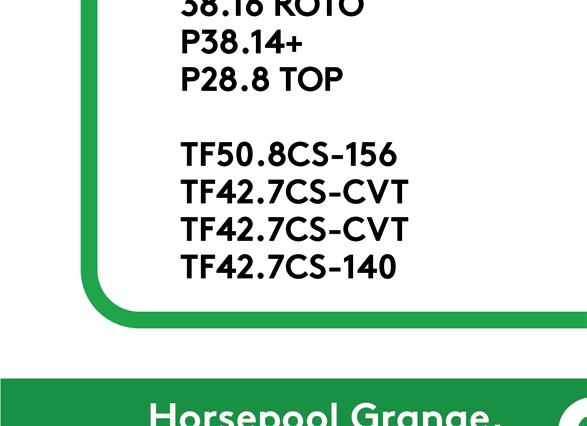

productivity and water quality – one reason Severn Trent introduced the

Dr Cooke said: “Biofumigant species, such as Brown or Indian mustard and radish, can help control soilborne pathogens, while deep-rooting species, such as radish, can scavenge nitrogen and retain it for use by subsequent crops.”
The deadline for applications is 31 December 2023. For more information and full eligibility criteria, contact your local Severn Trent agricultural adviser or visit www.stwater.co.uk/steps

Achange in the law means farmers must now provide photo identification before they purchase ammonium nitrate fertiliser this autumn.
The law change came into effect on 1 October. It affects sales of AN fertilisers with a nitrogen content of 16% or more and represents a widening of the Control of Poisons and Explosives Precursors Regulations 2023.”
The NFU says the requirement applies to compounds, blends and mixtures such as NPK fertilisers that exceed the AN threshold regardless of the overall nitrogen content. It will also apply to CAN (Calcium Ammonium Nitrate) and potassium nitrate.
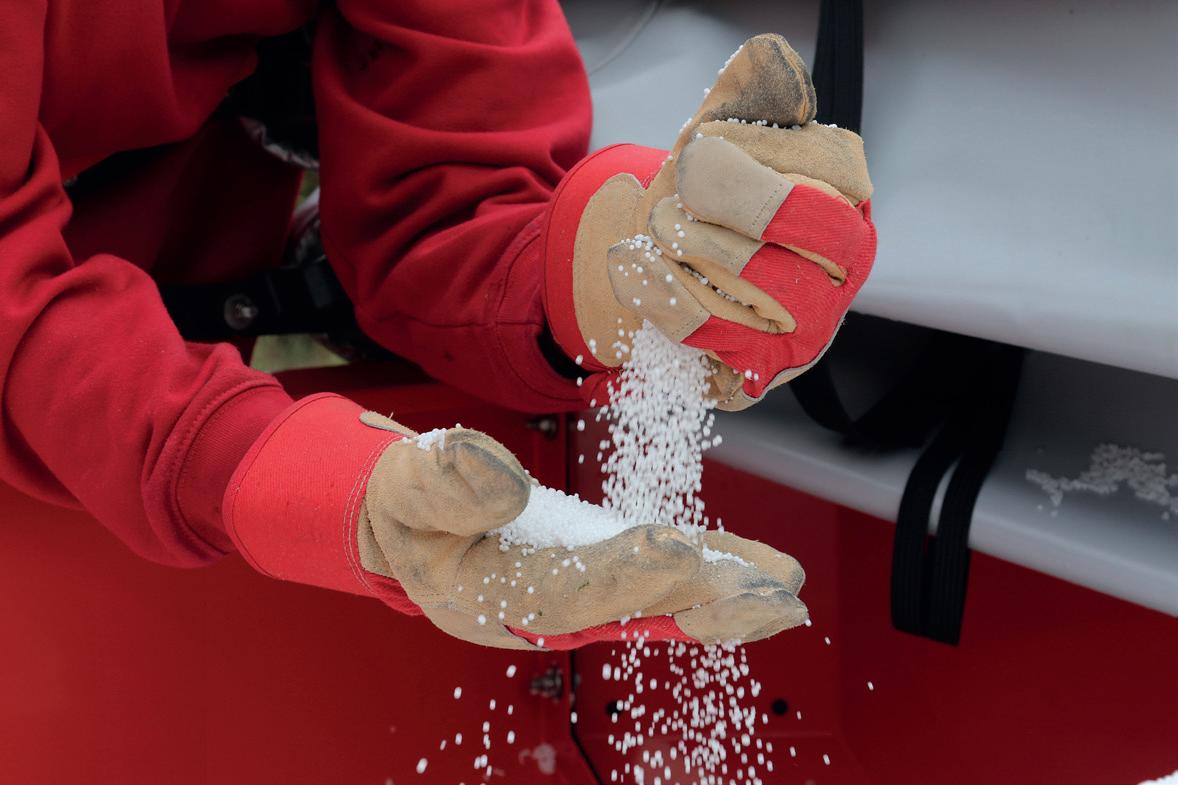
In an advice note issued to farmers, the NFU suggests the photo ID doesn’t need to be a passport or driving licence. But it says purchases will involve recording the type of business and a VAT number if applicable.
“At this stage, we don’t believe you’ll have to present photo ID in person – sending via email, text or another app will suffice – as long as it matches the name of the person placing the order or account holder.
“The ID provided can be of anyone in the farm business who is tasked with making the purchase, and verification will be kept on record and will need to be updated every 18 months in the case of professional users, or if there is a change to a usual order.”







The NFU says it raised concerns that the new rule mustn’t be a barrier to ordering fertiliser at a time when the market is in flux. “We’ve had assurances that there should be no requirement to provide the ID to place the order – it can be sent afterwards.”
If there are multiple people in a farm business, it should only need one person to provide the ID, says the NFU. Purchases on behalf of a group
affect
mean a photo ID could be required by the merchant for someone from the farm where the fertiliser will be delivered.

“As there are many and varied scenarios where this could apply, we cannot give comprehensive examples of how this will work.
“But if someone is seeking to buy fertiliser on behalf of others, the key test is likely to be who is acquiring the fertiliser on delivery.”
The photo ID will be kept on file by the merchant in accordance with their data security and storage policies, says the NFU. All standard data protection and legal requirements for the safe storage of your personal data will apply, it adds.
NFU crops board chairman Matt Culley says the new rules must not hamper the ability of farmer to purchase important crop nutrients – especially during times of urgency to get fertiliser on farm and applied within the appropriate timeframe.

“Farmers need to be aware of this new regulation so that they can work with their suppliers to ensure it doesn’t cause problems with purchases,” he says.
Other organisations lobbying the government have included the Agricultural Industries Confederation. AIC head of fertiliser Jo Gilbertson has warned that “tens of thousands” of farmers could be caught out
by the new legislation.
“While we will always support efforts to further minimise the public safety risks of fertiliser falling into the wrong hands, the government has failed to understand how ammonium nitrate products are bought and sold within agriculture.”
The NFU emphasises that it wants to ensure the safe use of fertilisers. But it says it has been working with the wider
supply chain to explore the possibility of earned recognition to reduce the burden on members.


“We want to ensure the safe use of fertilisers, however, we have made the case that there are already many industry, Red Tractor and FIAS (Fertiliser Industry Assurance Scheme) procedures around the purchase, storage and application of fertiliser.”
Matt Culley: New requirements
ammonium nitrate and other nitrogen-based fertilisers.
Farmers need to be aware
Growers are reminded to avoid short gaps between spraying off and drilling, which can leave a green bridge for aphids to sur vive and spread barley yellow dwarf virus into new crops.
Cereal volunteers and some weed species can host grain aphids and bird cherry-oat aphids – both of which are vectors of BYDV. But infection rates are lower when there is a nine-day gap compared to just two days, according to Bayer trials.

“When there is a short interval between spray off and drilling these aphids can survive on the dying vol unteers and weeds, then quickly in fect the new crop as it emerges,” ex plains Bayer’s Matt Siggs.


The Bayer trials team set out to find the optimal interval between green bridge destruction and drilling. In fected bird cherry-oat aphids were released into plots of cereal vol unteers. Plots were then sprayed off, with winter barley drilled af ter a two-day or nine-day gap.
Barley yields were signifi cantly higher in plots treated with glyphosate nine days before sowing. But aphid surviv al was much higher in plots where there was a two-day gap – leading to
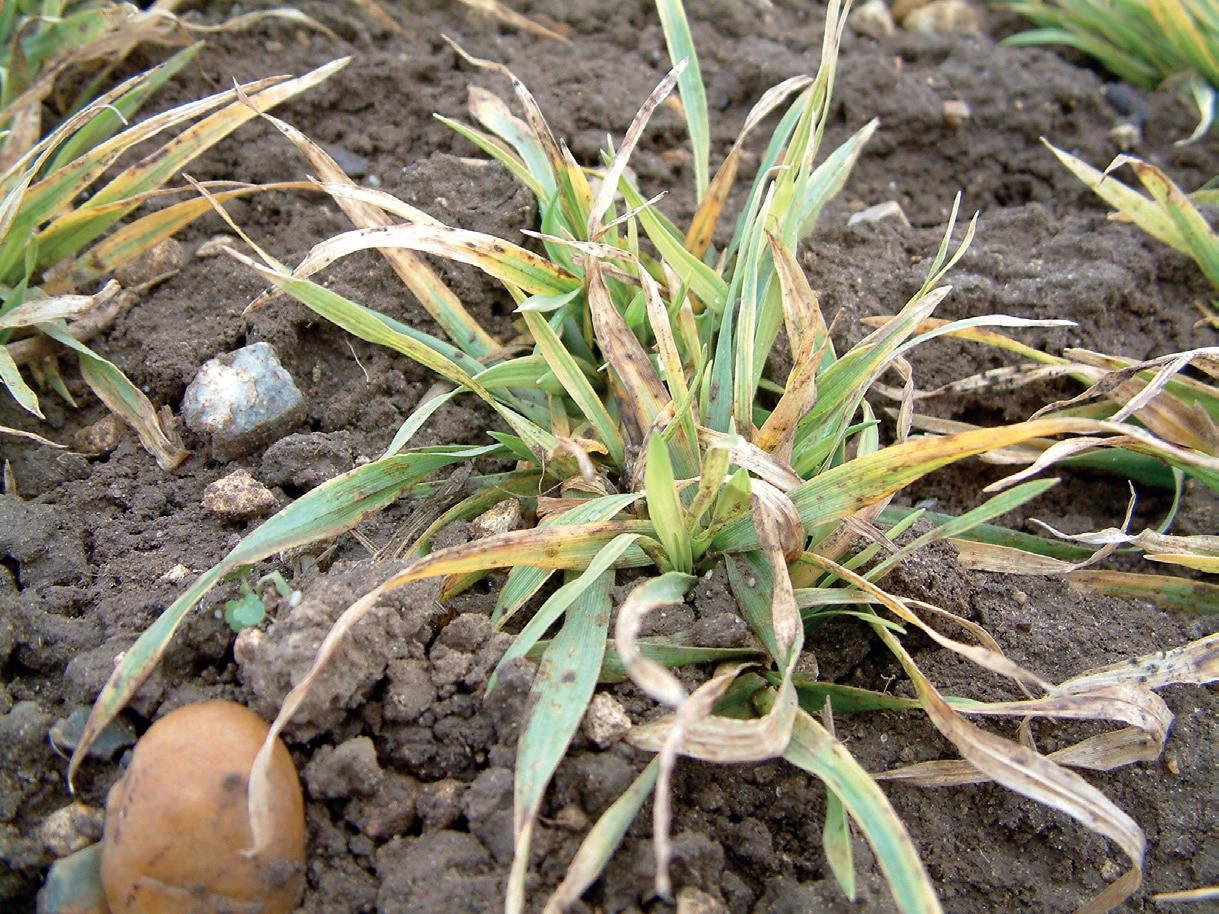
Top: Symptoms of BYDV on young plants include yellowing leaves
Inset: Shorter intervals mean grain aphids can survive on dying plants
Trials results are clear, says Matt Siggs (left)
Northamptonshire grower is drilling double the amount of winter wheat Mayflower this autumn after the variety performed well in difficult conditions.
Emma Bletsoe, of Denford Ash Farm, near Kettering, was delighted with her first-time crop of the Group Two variety which bucked the recent negative trends of sliding Hagbergs and low specific weights for milling
The 29.38ha crop of Mayflower yielded 10.62t/ha when it was combined at 13-15% moisture on 10-16 August, says Ms Bletsoe, who will now drill at least 60ha of the Elsoms variety on the back of its positive ini-
“After a stop-start harvest, we were delighted with Mayflower’s overall
“One field in particular yielded an excellent 11.18t/ha. It combined extremely well, producing a nice bold grain with early samples achieving a high Hagberg of 335-368 and an overall specific weight of 78kg/hl.”
Later drilled
Ms Bletsoe farms 490 ha of combinable crops on heavy clay soils, alongside son George and farm manager Stuart Prior. It was her son’s decision to go
before, during and after harvest.
“We are seeing some fairly vigorous and large weeds and volunteers which will require more robust rates than may be assumed, so get agronomic advice.”
Mr Siggs emphasises that an integrated pest management approach is essential for BYDV management, utilising tools such as T-sum and selecting resistant varieties. Delayed drilling is also effective and fits in well with weed control programmes.
“Because of the longer gap between application and drilling, there could be concern about additional weed germination,” he says.
“Monitor carefully before drilling and consider Roundup in the pre-emergence mix at 540gms/ha if there is further weed emergence. But keep strictly to the true pre-emergence timing – and of course get advice about it.”
toria tritici resistance and gene resistance to both soil-borne wheat mosaic virus and PCH1 for eyespot.
“We drilled the Mayflower on 5-12 October last year using a tine drill on one field and a Horsch Pronto on the other. All the Mayflower was grown as a first wheat following winter beans and it established well showing good early vigour.”
Some 248kg/ha of Piamon 33N – a granular urea nitrogen fertiliser with sulphur well suited to earlier appli-
cations – was applied in mid-February. Some 140kg/ha of urea followed in early March before 110kg/ha of ammonium nitrate at the end of April.


Agronomist Damian MacAuley of Indigro recommended a three-spray T1, T2 and T3 fungicide programme. The T2 spray included plant growth regulator Terpal (mepiquat chloride + 2-chloroethylphosphonic acid) for additional insurance.

By late May, the Mayflower was clean and standing well despite high disease pressure earlier in the spring. Agronomically, it was easy to manage and made good use of a slightly restricted nitrogen programme due to last year’s high fertiliser prices.
Endorsing the positive evaluation, Elsoms head of technical George Goodwin said he was delighted with interest in Mayflower. Feedback for the variety had been positive in a very challenging year for milling wheats, he said.
“There’s little doubt that this year’s challenges have had an impact on harvest. Many farmers have frustratingly navigated a stop-start harvest which has negatively affected
both yield and quality.
“We’ve had all the right weather this year, just in the wrong order. The cool wet spring meant cereal crops were less resilient to take on the extended dry, hot period we experienced across May and June.

“It feels like insult to injury to have what is predicted as the wettest March and the wettest July on record in the same year - yet, at the same time, ideal for showcasing varieties like Mayflower’s resilience.
A strong tillering variety with vigorous spring growth, Mayflower has emerged through a tricky season better than many other Group 2 wheats, said Mr Goodwin.
The variety continued to grow in popularity catching the eye of many progressive farmers, he added. The buzz of positive news around its performance this year should give growers reassurance that they’ve made the right choice
“With its very high untreated yield there’s a good opportunity for growers to reduce fungicide inputs for greater cost efficiency, and, on marketing, beyond its bread making qualities, Mayflower is also suitable for export.”



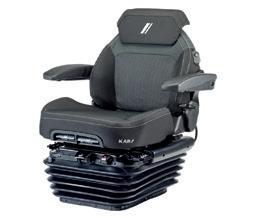


Celebrating 96 years in business 1924-2020

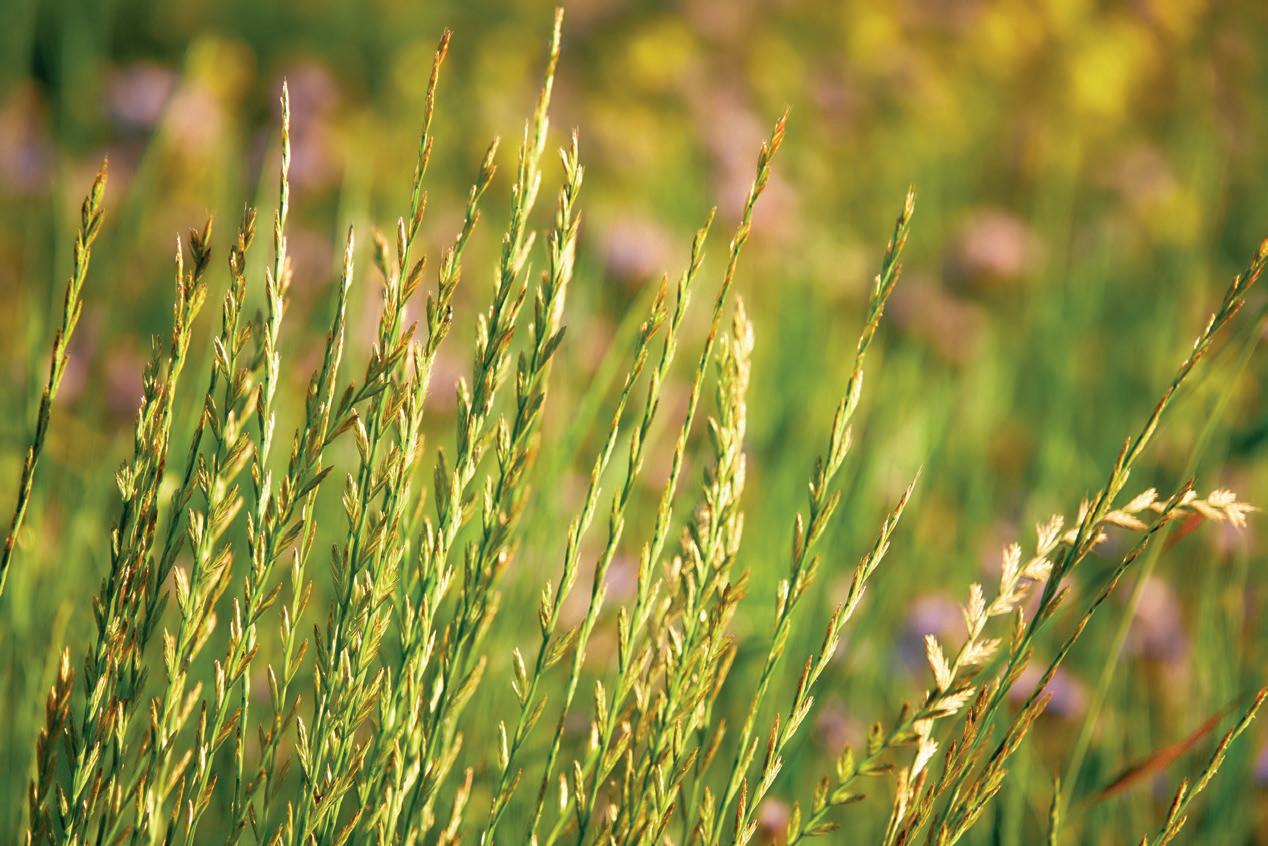
Cultural controls are helping to rid fields of herbicide resistant ryegrass on a Nottinghamshire farm.
It comes after father and son team Peter and Rob Barlow took on 160ha of land infested with the weed. Soil types vary from gravel through to heavy loam across the farm which encompasses 260ha rented from the Crown’s Bingham Estate.
“Back in 2019 a neighbour was retiring and we thought we’d like the opportunity to take on his block of land,” explains Rob.
“From looking and talking over the hedge, we knew there was an issue. A traditional approach to farming, combined with a history of baling contractors, had enabled ryegrass to get a firm hold and spread prolifically.”
Progress has been made combatting ryegrass with two years of careful management. But a couple of stubborn fields remain. Spring cropping isn’t an option, so the duo use a combination of Westwold grass and maize to get the same benefits.
“After harvest, we drill the grass, and graze it over winter,“ says Rob. “In the spring, a cut of silage is taken before it is sprayed off and the maize crop is sown. It’s working well and controlling the ryegrass.”
Where fields haven’t been ploughed for 5 or 6 years they’ve been able bury the seed and apply Luximo.
“That’s had great results and really brought the ryegrass back under control.”
Delaying drilling is another tool being deployed across the acreage, although Rob admits there’s often a conflict between getting a crop established and optimising weed control. “Clean

land is drilled first, usually at the very end of September.”
To reduce the risk of seed spreading, field are sprayed and combined in the same meticulous order. “All machinery is blown off and washed down to reduce the risk,” says Rob. “We go into the cleanest blocks first and do the dirty ones last.”
On the home farm, the herbicide programme has historically been Liberator (flufenacet and diflufenican) plus Stomp Aqua (pendimethalin) at pre-emergence followed by Axial Pro (pinoxaden) at post emergence, and it’s worked well.
But Rob says there were too many survivors on the new fields. “Our agronomist, Graham Partington, took samples and sent them off for testing. We weren’t surprised when the results confirmed resistance to herbicides.”
It was one reason Rob and Peter accepted a suggestion by BASF agronomy manager Colin Mountford-Smith to trial Luximo on their worst remaining field. With such a difficult and high population of ryegrass, it was an opportunity to test Luximo’s performance.
A crop of Typhoon was drilled across the 24ha field on 9 October
up with a spring post-em application of 0.8 litres of Axial Pro. There were also three smaller blocks treated with Liberator and pendimethalin; Luxinum Plus and Stomp Aqua; and an untreated block.
At final count on 25 May, the untreated plot had over 670 ryegrass heads per square metre. Of the treated plots, Luxinum Plus and Stomp Aqua had the greatest efficacy with just 89 heads per square metre.

The farm standard of Liberator + Stomp Aqua followed by Axial Pro resulted in 228 heads per square metre.
“In the autumn, the control from the Luxinum Plus looked to be around 95%,” says Rob. But ryegrass re-appeared in early spring as a second flush ocurred across the UK as a very


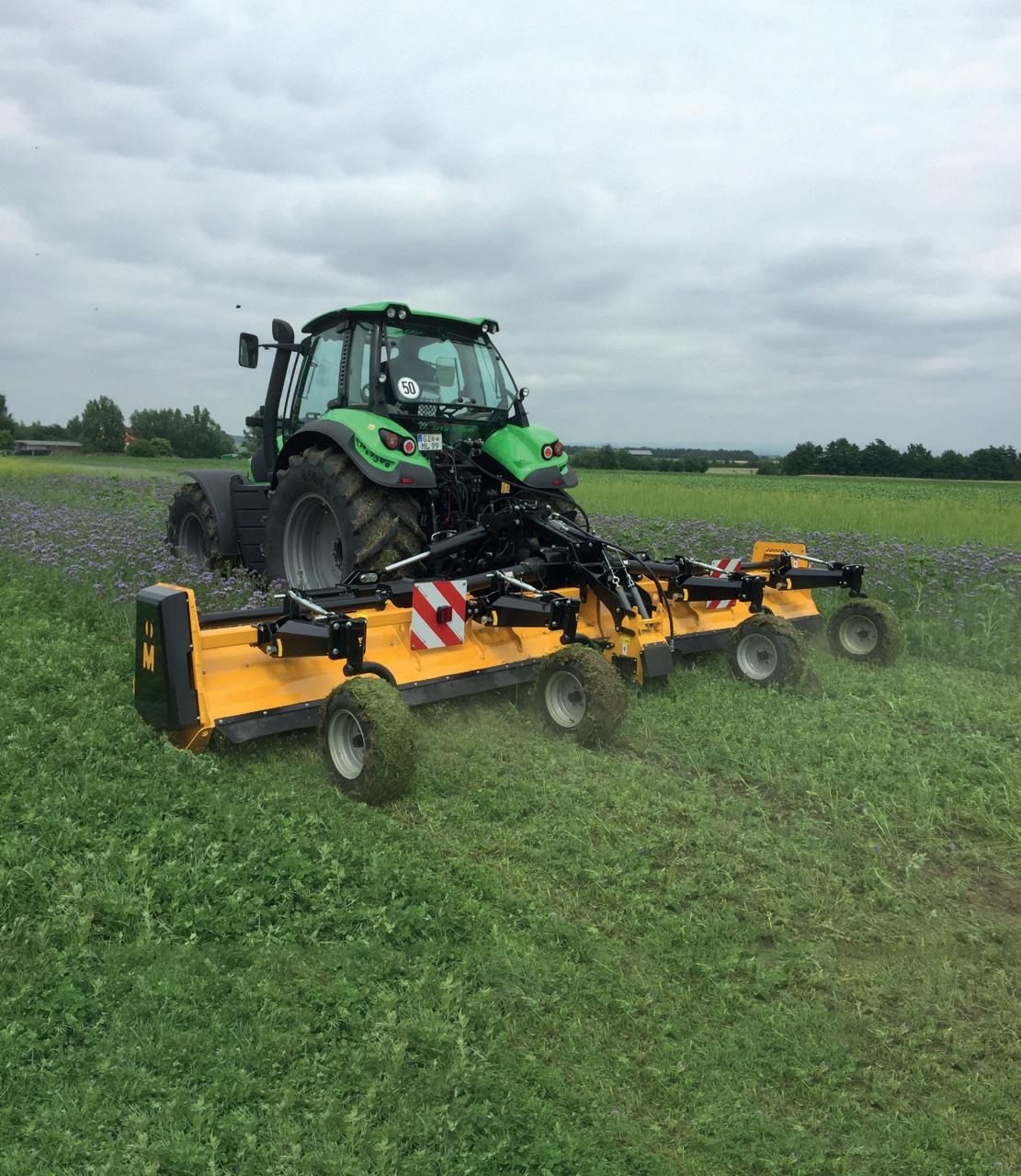
ther, the field will now be put into a grass ley.
“Ryegrass is such a massive plant that only the most serious chemistry will touch it. We can’t afford to risk it spreading to other areas of the farm,” he says.



Mr Mountford-Smith says: “That is why chemistry is the ‘backstop’ and all cultural controls are still critical.”


Where the ryegrass population isn’t as high as the trial field, Rob intends to continue with the cultural controls already in play.
The herbicide programme, however, will undergo significant change.We’ll be using a lot more Luximo,” he says.




“We’ve got a question mark over the Axial Pro but we will to wait for the resistance results before dropping it. If there is resistance, it’s a lot of money to spend. As we’ve not used Avadex before, we have options.”

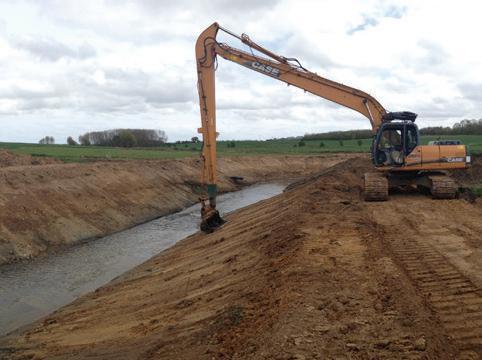


Growers unable to drill oilseed rape until last month due to the wet summer can rest assured that sowing the crop in September is not necessarily a bad thing.
Later drilled oilseed rape can still produce a profitable crop – if it is a phoma-resistant hybrid variety variety with vigorous development, says Chris Guest, managing director of LS Plant Breeders.

Weather data shows that September-drilled rape is still an option, says Mr Guest, who has analysed daily temperatures or the last two autumns at LSPB headquarters in Impington, near Cambridge.
Analysis shows that temperatures totalled 1,131°C between the start of September and end of November in 2021 and 1,163°C for the same period in 2022. This is more than ample for successful rapeseed development, says Mr Guest.
“If we want to reach the 8-leaf stage
with a robust plant based on 8mm root neck diameter and a tap root of more than 8 cm before winter, we have to accumulate 150°C for germination and around 120-150°C per leaf pair.
“Calculating both figures together, we need minimum 750°C for a sufficient development before winter, and based on the temperature data from Impington, we can still reach that stage, even with ultra-late sowing dates going right up to the end of September.
Cautioon needed
“There are a number of provisos. Most important is to say that late sowing is advisable only for hybrid varieties with their vigorous development, Also that late sown oilseed rape crops are more at risk to phoma, so a good phoma rating is advised.”
LSPB hybrid Murray, with its vigorous growth habit and exceptional RlmS phoma resistance, is a good ex-



Chris Guest: good phoma rating is advisable
ample of a variety suited to late drilling – depending on farm location and adjustments like modifying your sowing rate.
“In a challenging season like this, it is worthwhile considering late sowing if your temperature data is comparable with ours from Impington,” says Mr Guest, who points out that many growers now have their own weather station.
LEMKEN supplies perfectly coordinated, innovative technology for high-yield agriculture. From stubble cultivation to ploughing, seedbed preparation, seeding up to CropCare – well thought-out solutions come from one source at LEMKEN.

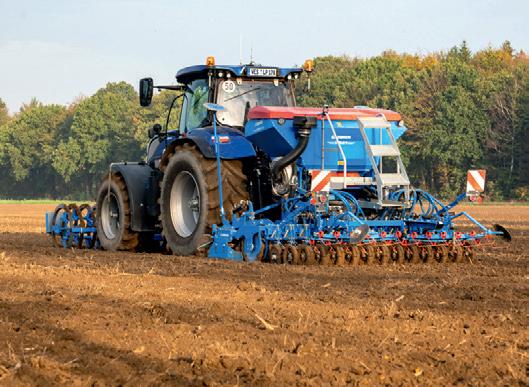

OUR DRIVING FORCE: YOUR SUCCESS!
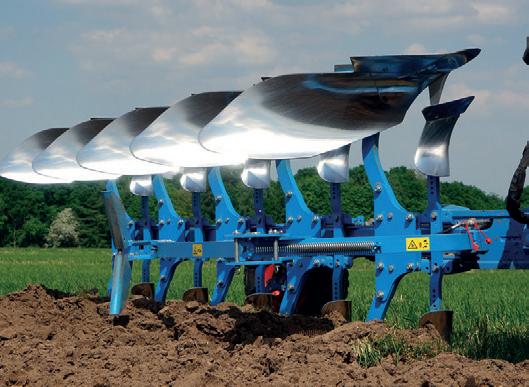





Strengthens the barrier against weed germination


Prolongs the weed control period in wet conditions


Boosts herbicide effectiveness in dry conditions



Safeguards the crop from herbicide damage

“For us, Backrow Max® is part of the mix every year – it’s not a case of ‘do we, don’t we’, it’s just something we always use”
Keith Challen, Farm Director, Leicestershire








Fewer cultivations can be good for soil structure and health –but ploughing still has its place and can bring dividends, suggests the latest research.
Nitrogen Use Efficiency (NUE) and greenhouse gas emissions both depend on crop productivity. And despite the ups and downs of grain markets and input costs, yield remains the driver of arable profitability.
This means tillage in itself need not be bad for the environment, according to field-scale trials undertaken by Agrii at the agronomy company’s long-established grassweed management technology centre at Stow Longa, near Huntingdon.

Agrii agronomy specialist Colin Lloyd has overseen more than two decades of research-led at Stow Longa. And he sees plenty of room for “appropriate” tillage in arable rotations on heavy land in particular.

“You can analyse your performance down to the last square metre of land or litre of diesel. But whatever you do, you can’t get away from the fact that decent margins have always and will always depend on sufficient yield.
“Yes, grain quality is important – as is effective input and overhead control. But without the tonnes you’re not in the game. Which is exactly what our rotational work with a range of cereals crops is also showing with Nitrogen Use Efficiency (NUE) and carbon emissions.”
For seven years, Mr Lloyd and his research team have managed different rotations in one hectare blocks at Stow Longa. Tillage regimes range from continuous and rotational ploughing to deep one-pass, minimum tillage and direct drilling with catch or cover crops.
Above: The trials compared different tillage regimes
As well as huge differences in grassweed populations between different rotations and tillage regimes, their pioneering work has highlighted large differences in margins after cultivations, drilling and all inputs.
In 2022, the range in margins between the best and worst rotation and tillage combination was a £1821/ha. More recently, researchers have extended their work to measure the NUE and greenhouse gas emissions from cereal crops to established protocols.
Yields of first wheat Fitzroy on heavy clay land in 2022 varied by almost 3.1t/ha between the different tillage regimes. Both continuous ploughing for six years and a plough reset after five years of direct drilling delivered over 9.75t/ha.
In contrast, direct drilling after
Without yield, you’re not in the game
Colin Lloyd
Continued overleaf
five years of ploughing and six years of continuous min tilling or direct drilling produced less than 7.25t/ha.
Unsurprisingly, given exactly the same starting soil nitrogen levels and fertiliser applications, this performance was reflected in an NUE of over 67.5% for the higher tillage regimes and under 50% for the lower ones.
“Using the YEN Zero carbon tool, the lowest tillage regimes generated CO2 emissions some 10% lower per hectare than a ploughed regime. But on a per tonne basis, much higher yields meant emissions from ploughing were 25% lower (see figure 1).
Measuring emissions
“Even the highest emission regimes were well below the current 340kg CO 2eq /tonne UK feed wheat benchmark established by the authoritative 2022 CHAP Net Zero report, with the ploughed areas close to the lowest reported national crop emissions intensity.

“What’s more, we saw the same thing in our Skyway spring barley,” adds Mr Lloyd. “The higher tillage regimes gave NUEs a good 40 percentage points up on the lower tillage ones and per tonne CO2e emissions almost 25% lower (figure 2).

“Again, it’s all about yield. The plough regimes both produced more than 8.75t/ha against some 6.3t/ha for minimum tillage and direct drill regimes.”

Grassweed populations clearly played their part in these yield differences. But, even after five years of continuous min-tilling or direct drilling with catch and cover crops, our heavy ground cant support the sort of winter wheat and spring barley yields it is does under the plough.
Work with the UK Centre for Ecology and Hydrology suggests reduced tillage is good for soil microbial popu-
lations. But Mr Lloyd says: “We have struggled to see any consistent differences between the regimes in either organic matter levels or soil health scores.”
It has been a slightly different story with the SY Armadillo hybrid winter barley crop. Trrials in 2022 showed much less of a yield difference between the tillage regimes, and similarly smaller NUE and GHG emissions differences (figure 3).

After many years of observing how much less affected hybrid barleys are by seedbed conditions than wheat or spring barley, Mr Lloyd attributes this to their ability to cope better with the more challenging conditions the least tillage regimes present on heavy ground.
Overall, he considers the NUE and emission results particularly encouraging for growers with soils less suited to major tillage reductions, pointing out that what clearly counts in environmental terms as much as in economic ones is growing a good crop.
“It’s crystal clear from our work that, however you do it, growing a good crop will reward you in NUE and GHG emissions per tonne of production as well as on the bottom line,” says Mr Lloyd. “And in many situations this
driver. And recognising the obvious machinery and labour-saving opportunities from tillage reductions, this must mean the least tillage necessary for your particular conditions.

“You shouldn’t shy away from low disturbance lifting of heavy or high silt soils that have become too tight. Nor from using the plough as a reset where grassweed populations have become too high.
“We have to recognise that cultivations aren’t going to completely deplete soils and there is room for them in many rotations, even where the emphasis is on tillage reductions. As with so many other inputs, the secret to success is knowing how much to apply, when and where.”
Above left and below: Different tillage systems bring different resultsContinued from previous page

Twin hold roll pin blade removal system and backward leaning air borne upper blade for trash lift and ease of trash flow
backward leaning air borne upper blade for trash lift and ease of trash flow
Seed depth tail 40mm deep holding the seed at correct depth and placing seed on either side of seed terrace
Seed depth tail 40mm deep holding the seed at correct depth and placing seed on either side of seed terrace


Triton launched its unique deep soil engagement direct drill in 2018 to give plough based yields from direct drilling. 6 years later we are consistently achieving higher yields from the Triton than from ploughed trials on our own land. The Triton is the only all weather seed drill on the market that gives the flexibility to grow maximum profit autumn sown crops whilst reducing blackgrass from late drilling... several manufacturers are now also claiming all weather capability... if these are false claims then the farmer’s new approach will be thwarted.
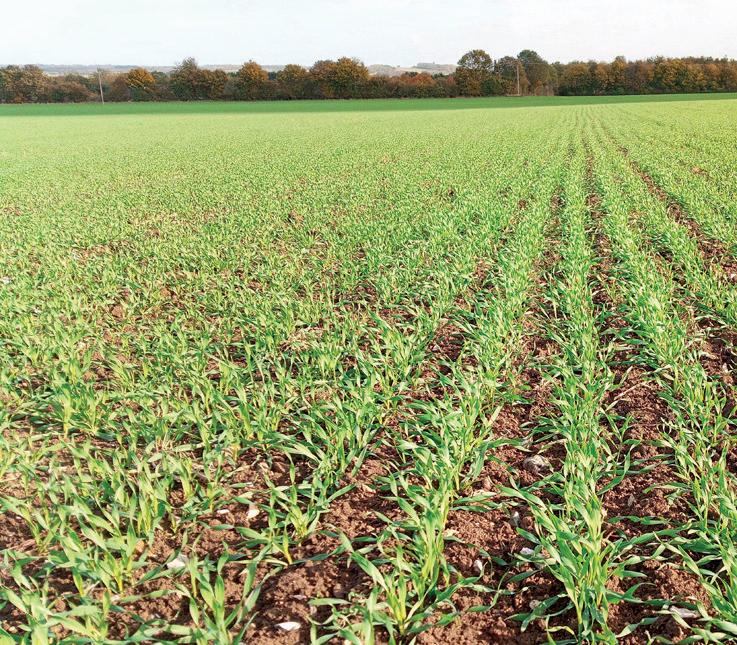
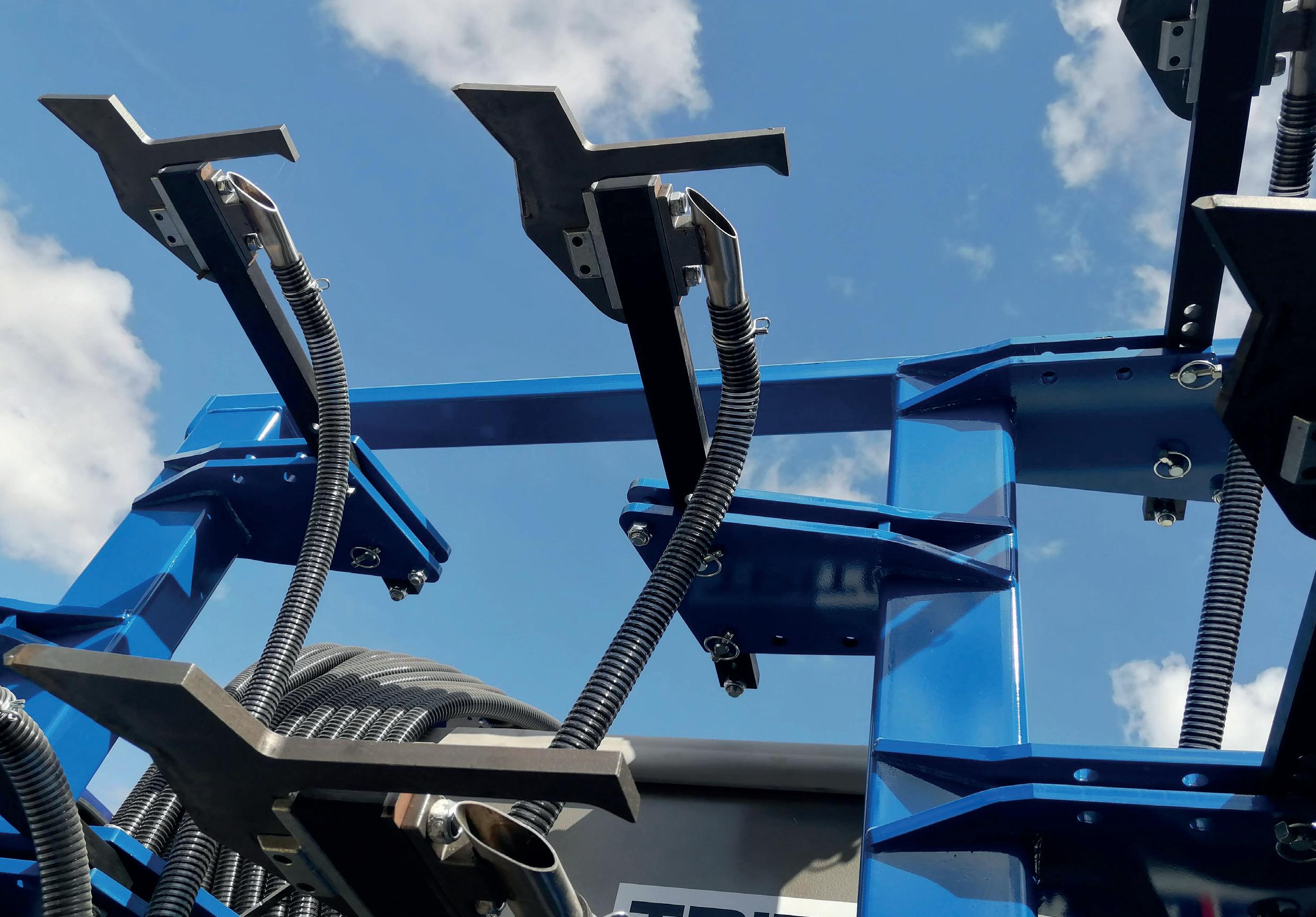
Downward facing upper blade does not hook grass weed seed up from below stale seed bed and field surface
SOIL SURFACE
Downward facing upper blade does not hook grass weed seed up from below stale field surface

seed bed and








Triangular tungsten tiles for reduced draught and soil disturbance

draught and soil disturbance

SOIL SURFACE
Drilling at 40mm depth
Downward facing upper blade holds field surface in place minimising soil eruption in the stale seed bed
Drilling at 40mm
Downward facing upper blade surface in place minimising soil eruption in the stale seed bed
14cm deep lower blade takes blade deep below ground for air drainage and rooting
Buying a blade drill is now an open and shut case. Why?
Because only the Triton drill has a slot closer
14cm deep lower blade takes blade deep below ground for air drainage and rooting



The ‘must have’ seed drill for exacting maximum returns from SFI without losing crop output






















• Machines can save time and money
• Growing interest in agri-technology
• Precision and efficiency are popular
Growing interest in agricultural sustainability is reflected in the range of exhibitors booked for this year’s Midlands Machinery Show, held on November 8-9 at the Newark Showground.

Attendees will have plenty of time to browse machinery with a ‘green’ theme. This includes electric vehicles, minimum tillage and precision application equipment, nutrient and water management, energy generation, waste reduction, and monetising carbon and biodiversity net gain.
Camera-guided mechanical weeders will be on display on the Keith Rennie Machinery stand this year. Managing director Mike Britton says he is seeing growing interest in the technology for maize – and even cereals – now row spacings are increasing to 16, 20 or even 25cm.
“Uptake over the past two to three years has been helped by government grant funding Farmers are looking at regimes where they can integrate
sprays with mechanical methods to re duce inputs and impact, and provide other benefits like aerating the soil and breaking up any capping.”
Nitrasol liquid fertilisers, exhib iting for the first time this year, will be reporting trials that show use of its products can reduce nitrogen leaching by a quarter, halve ammonia volatili sation, and safeguard soil organisms.
The market for liquid nutrition con tinues to grow, due to their suitability for precision application, zero use of plastic, and opportunities to apply in wider weather windows, explains Ni trasol sales director Rob Buck.
“All of these are not just good prac tice – they save money at farm lev el and help to future-proof farmers against new regulation.”
Also making its debut at the show is CSX Carbon, which will be demonstrating how farmers can access natural capital markets while receiving a fair financial return for environmental land management practices.
Chief executive Andy Howard says: “Audit trails can be used to verify climate actions on farm. They can also open up new trading opportunities for farmers – such as the new biodiversity net gain rules for developers coming into effect shortly.”
Renewable energy is another way farm businesses can cut energy use and costs. Darren Wells from Lincs Solar
Organised by the Newark and Nottinghamshire Agricultural Society, the Midlands Machinery Show showcases the latest range of tractors, machinery, services and technology to farmers, machinery operators, contractors and landowners.
For the fourth successive year, the event will also be hosting the NFU’s East Midlands Environment Conference on the first day. NFU Midlands land use and environment adviser Emily Wood says the NFU will be shining a spotlight on different land uses.

“With such significant change in the industry and a focus on the environment playing a key part alongside food production, we have an excellent
Solutions reports a dramatic increase in enquiries for solar PV over the past 12 months due to energy price rises. But he says this also means customers are experiencing a shorter return on investment as a result.
“We’ll be on hand at the show to discuss how panels on agricultural and domestic roofs can significantly reduce energy bills – and also outline the finances and logistics around large ground-mounted installations.” NRoSO and BASIS points are available for attendees. For details and to register your attendance, visit www.midlandsmachineryshow.com.
Grant funding has helped uptake




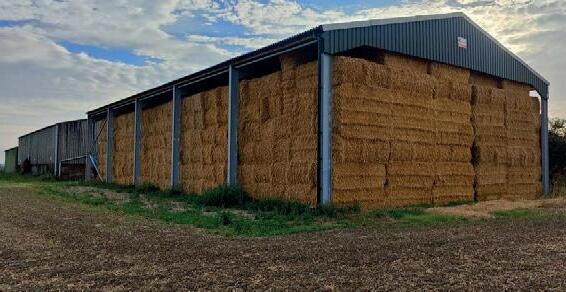
Exhibitors at the Midlands Machinery Show say the event is well-timed for farmers looking to make the most of government grants.
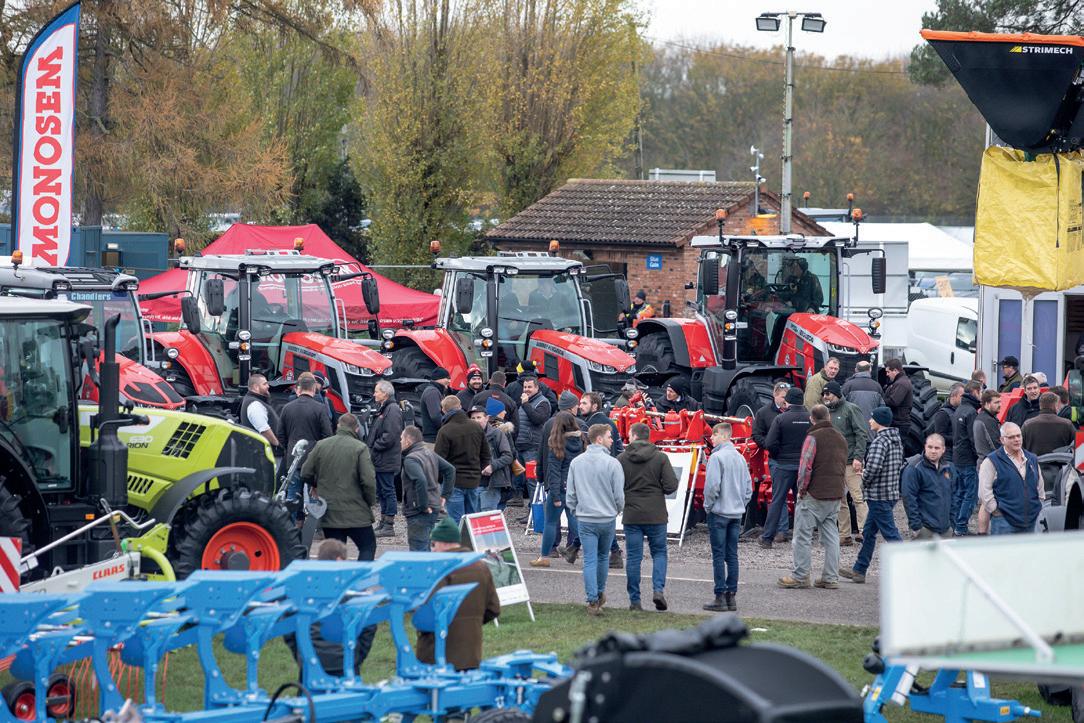
A number of machinery, technology and productivity grants are expected to re-open this winter – including grants for farm equipment, says Tom Cheer, agricultural business consultant at Brown & Co.

The main grant relevant to the show is the Farming Equipment and Technology Fund (FETF) for productivity and slurry – which is very similar to the old Countryside Productivity Small Grants scheme, says Mr Cheer.
“It aims to improve productivity and efficiency on farm. Applications are online, selecting items from an eligible list and getting paid a fixed amount of grant no matter how much is spent on the item.”





So far, there have been two rounds

ed to open to applications this win ter. Previous rounds have seen grants available for items such as direct drills and weeders – with further items expected to be added in future.


Camera guided equipment, liquid fertiliser applicators and small seed

Displays will include machines from KRM, Grange Machinery, Sands Agricultural Machinery, Househam sprayers and Knight sprayers.


“For a 6m direct drill in round two, the amount of grant awarded was £18,720; if it was capable of apply-





ing fertiliser simultaneously, it was £25,000,” says Mr Cheer.

“For N-Sensors it was £6,675 and for camera-guided inter-row vegetable weeders, a 6m machine attracted £22,745.”
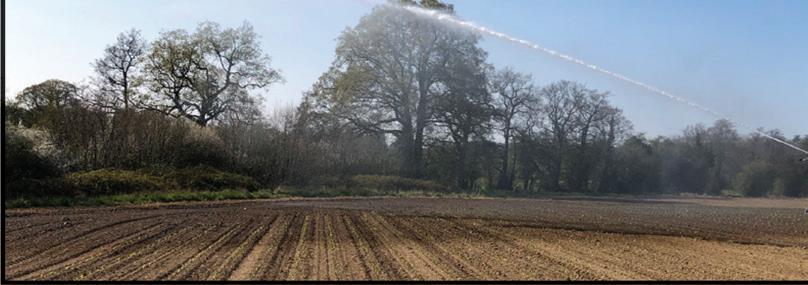

The list of eligible items varies from round to round but is usually expanded over time, with some items occasionally removed, says Mr Cheer.
“The maximum grant is £25,000 but farmers can choose as many items as they like to meet this amount. It is worth bearing in mind that for each item, a minimum specification must be met, which the Rural Payments Agency is incredibly strict about.”
The grant helps farmers to access more technical machinery at a lower cost, says KRM managing director Mike Britton.


“KRM machinery’s tine drill SMP model will be on show at the Midlands Machinery Show and has so far been eligible for the FETF grant. It promotes regenerative farming, moving the soil less, leading to less release of carbon.
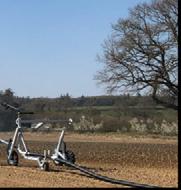
“The grant has also covered KRM Calibrators – control systems for ferti-
liser spreading and variable rate application and KRM Patchwork GPS section control.
“Both are driving efficiency, meaning farmers use less fertiliser on the field, and less fertiliser is wasted through run-off, with environmental benefits.”

There is also the Animal Health and Welfare aspect of FETF and larger productivity grants under the Farming Transformation Fund. They cover water management, reservoirs and irrigation equipment; slurry infrastructure; adding value and improving productivity.
Mr Cheer, says: “Improving Farm
Productivity is about bringing robotics on farm like robotic harvesters, sprayers and weeders, aimed at the vegetable industry.
But it's also autonomous tractors and robotic milking and feeding systems – anything with a camera to sense its surroundings and decision-making capabilities.”


There are also opportunities for grants to add value to farm produce – aimed at packhouse equipment like optical graders. The Farming Transformation Fund grants is a two-stage process with an ‘expression of interest’ or ‘online checker’, followed up by a full application.
Currently closed to new applications, the Farming Transformation Fund is expected to re-open this winter. Previously grants have accounts for 40% of the equipment cost from £35,000 to £500,000 with 60% match funding from the farmer.
“We are looking forward to meeting farmers at our stand at the Midlands Machinery Show to discuss the grant opportunities available,” says Mr Cheer.


Farmers can choose from a list of items
The show is a good time to catch up with friends
The Midlands Machinery Show con tinuing to back the next generation of agricultural engineers – with the return of its annual apprenticeship awards.
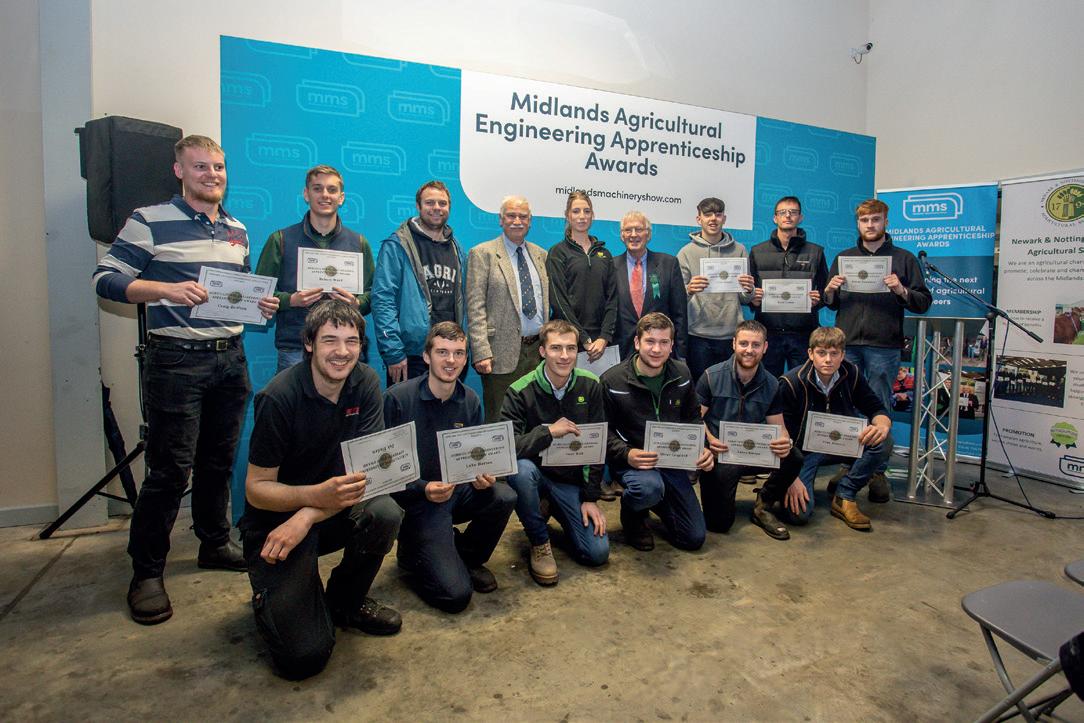
The Midlands Agricultural Engineer ing Apprenticeship Awards will return for the eighth consecutive year at the two-day event, which takes place on 8-9 November at the Newark Showground, Nottinghamshire.
The awards were initially introduced the Newark and Nottinghamshire Agricultural Society, which organises the event, to provide support and guidance to young apprentices from across the Midlands region.
Supporting the best of the next generation of agricultural engineers is key for promoting careers within the industry, says event manager Elizabeth Halsall. Apprentices are vital for farming and deserve opportunities to enhance their skills and knowledge, she adds.
“Through hands-on learning and experience, apprentices help cultivate a thriving and sustainable future for our farming com-
“Now, more than ever, they deserve new and exciting opportunities to inspire them and help support the experience, skills and confidence they need as they head into their future careers.”
In 2022, Robert Ward, a dedicated apprentice at Farol, was thrilled to receive the first instalment of his well-deserved award. With this recognition, he says he is motivated to continue his journey with Farol for many years to come.
also grants him the opportunity to invest in much-needed equipment,” says Ms Halsall.
“Applications are currently open, and we strongly encourage aspiring Midlands agricultural engineering apprentices to apply to have the opportunity to be selected.”
Successful applicants will each receive £250 – the first of a two-year instalment totalling £500. Entries are open until 13 October 2023 to agricultural apprentices aged 17-25 who are living and working in the Midlands.
Consolidation across UK machinery dealerships will see a raft of new exhibitors in innovation and technology at the Midlands Machinery Show.
New suppliers offering precision farming kit and environmental solutions will join the usual full complement of big tractor and machinery brands on display on 8-9 November at the Newark Showground.
Elizabeth Halsall. who organises the event for the Newark and Nottinghamshire Agricultural Society, says the result is a really diverse range of stands this year, with all indoor space sold out and outdoor plots disappearing fast.
“New independent companies seem to be using the Midlands Machinery Show to break into the industry and showcase their products – possibly because the show is known for attracting high quality visitors.”

Last year, 40% of visitors came to the show to research or place an order, says Ms Halsall. “They’re coming to do business, and travelling around 100 miles to do so –from all over England, but also from as far as Dundee in Scotland and Cork in Ireland.”
Almost 30 new exhibitors this year include Slanetrac, an engineering company
based in Ireland. It makes a range of minidigger attachments in-house. Others include Sencrop, offering precision weather data; and the Forestry Commission.
Despite this influx of fresh blood, there are also some stalwarts who have exhibited at the show since it started eight years ago. They include Hannah Setchfield of RC Setchfield, a family-run agricultural engineering business from Grantham, Lincolnshire.
Ms Setchfield says the equipment they have brought to the show over the years has changed with the challenges in farming. “Particularly now, farmers need to do more with less, so investing in the right equipment is essential,” she explains.
“Equipment on the stand has got bigger to reflect the additional capacity required, and more multi-functional as farmers need machinery that can operate 24/7, 365 days a year – and perform multiple activities.”
The apprenticeship awards return to the show for the eighth year







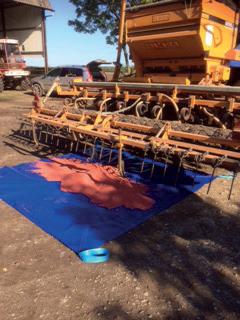
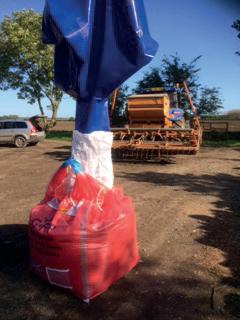










Mark Weatherhead Ltd

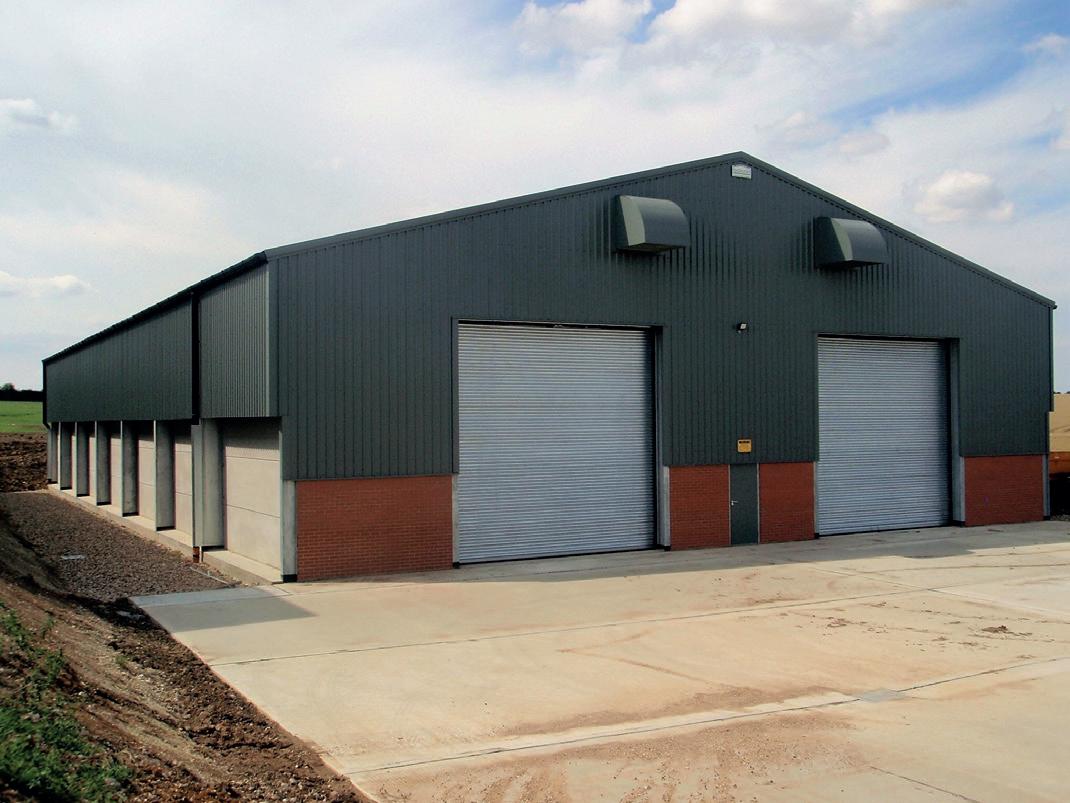

Telephone: 01954 210 355





Mobile: 07885 202 005


Hardwick, Cambs CB23 7QL
• Grain drying and storage



• Groundworks and drainage
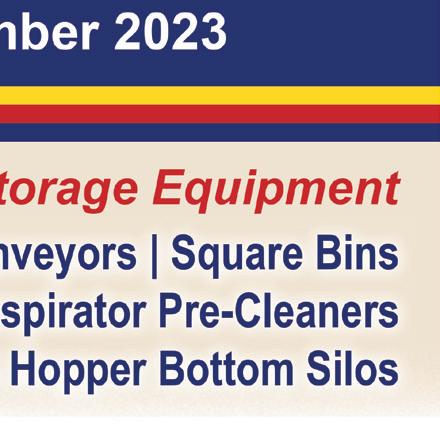



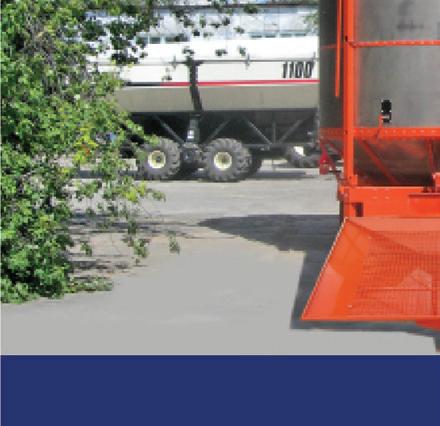
• Electrical engineering works




• Elevator/conveyor repairs

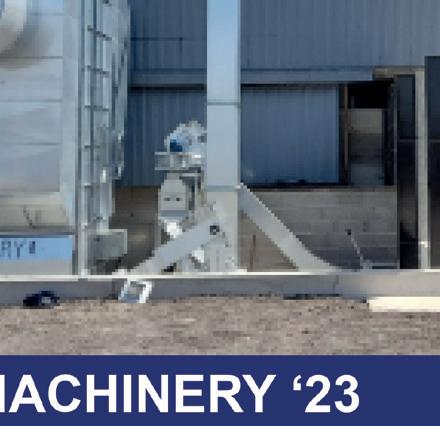



www.markweatherhead.co.uk

5 tips for successful control
1 Look for signs of rodents such as droppings and gnaw marks. Regularly walk the farm and record where rodent activity is apparent. Just because there are signs of rodents it doesn’t mean baiting that area will always be totally effective.
2 Rats do not like open spaces, so reduce activity by keeping the farm clear of rubbish, weeds, and objects – especially around grain stores. Preventing access to food and water will reduce the likelihood of rats breeding.
Asharp rise in autumn rodent numbers is prompting reminders to protect grain stores as falling temperatures see rats seek solace on farms.
“Farmers should take an integrated pest management approach and use a variety of baits to combat resistant rats and prevent infestations that can result in grain losses and contamination,” says David Reece, from pest control specialist Lodi.
Rats can thrive in a grain store and multiply quickly. But protecting stores does not have to involve the use of rodenticides, says Mr Reece. Farmers should select bait carefully to avoid wasting money baiting resistant rats, he adds.
“Farmers can take many non-chemical measures such as proofing buildings, identifying areas that rodents may be using for harbourage and making regular checks by walking the farm,” Mr Reece explains.
Rodenticides should contain actives such as cholecalciferol or brodifacoum because some rats are now resistant to previously popular actives such as bromadiolone and difenacoum,” he says.
The advice comes ahead of next year's changes to rodenticide authorisation. The
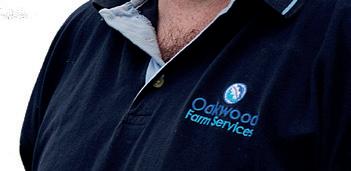
changes will effectively rule out using any second-generation anticoagulant (SGAR) in open areas away from buildings.
Alan Buckle, chairman of the Campaign for Responsible Rodenticide Use (CCRU) says many farmers will face a challenge when modifying control measures in a way that remains effective, affordable and environmentally responsible.
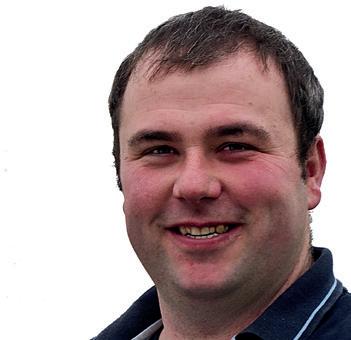
“Doing so may not be particularly straightforward and will certainly demand sound knowledge of what next year’s changes to SGAR authorisations involve and why they are being made,” says Dr Buckle.
“An uncomfortable truth is that, seven years since inception, the regime’s environmental targets have not been met. Responsible farmers will be all too aware that many wildlife species are widely exposed to and contaminated by SGARs.
“The widespread nature of this exposure is a grave concern and what the stewardship regime is required to reduce. The panel’s specified sentinel species, of course, whose exposure to SGARs is indicative of several others with similar ecology, is the barn owl.”
The HSE has said that, unless the stewardship regime’s environmental targets
3 Reduce the risk of infestation by ensuring there are no access points for rodents to enter buildings. Small measures like using mesh smaller than 10mm to cover gaps in grain stores will help to prevent both mice and rats gaining access.

4 Rats have a fear of new objects (neophobia) so establish bait boxes at least four weeks ahead of baiting to improve bait take. Adding non-toxic bait can encourage rats to 'trust' the boxes.
5 When non-chemical methods have been exhausted, the use of rodenticides to control rats and mice should be carried out methodically and carefully. Using a highly palatable bait is particularly important in grain stores where food is plentiful.
[source: Lodi]
are met, there will be a review of who can use SGARs, how they are used and where they can be applied. Dr Buckle said: “Clearly, we have been warned.”
A summary of the changes can be found at bit.ly/ ratchange. Farmers are invited to submit questions about the changes to the CRRU by the end of October at thinkwildlife.org/survey. Answers will be published next month.
Check for rats regularly, says David Reece
Afarmer-owned grain cooperative is reaping the benefits after replacing two ageing driers with a state-of-the-art system.
Weald Granary in Wiltshire installed two continuous flow Svegma driers in time for last year's harvest. They replaced a pair of driers installed at the cooperative's Marlborough site in 1987 and 1988, explained managing director John Smith.
“There is no question that our old Svegma driers had served us well,” said Mr Smith.
“Located outside of our grain store they had been exposed to the elements for over 30 years and had many hundreds of thousands of tons of grain and maize go through them. It was no surprise that they reached the end of their lives.”
Weald Granary is a grain storage, marketing and distribution co-operative, run by farmers for farmers. Grain is collected from members' farms at harvest and then stored and marketed via one of its pools.
The store capacity is 80,000 tonnes of grain with over 200 members from Kent, Sussex, Surrey and Essex. All loads are fully tested, stored and marketed to their maximum potential.
Mr Smith says he considered a number of alternatives after deciding to replace the old driers. Mindful of energy costs and the cooperative's environmental footprint, the potential for renewable and alternative fuels was carefully assessed.
“We have a very compact site so renewable energy was not an option because of the storage space and labour required. We wanted a drier that we could switch on, deliver instant heat and which we could just walk away and leave to get on with its job.”
Working closely with the team at BDC Systems, Mr Smith decided to replace Svegma with Svegma. He says he made the decision based on the drier's design and its proven track record of reliability and durability.
The driers were two different sizes. The largest 6m drier had a capacity of 61 tonnes of grain per hour, while the smaller 3m drier could handle 30 tonnes. They were replaced like for like. But the burners were upgraded as the originals were obsolete.
The existing dischargers on each of the old driers were still in good condition and did not need to be replaced –further evidence of the Svegma’s build quality and durability.
Not everything above the discharge sections needed to be replaced, some parts had life left in them, but due to the labour involved with removing and refitting the handling equipment, it made economic sense to replace everything in one go.
The drier-filling conveyors, gantries, supporting steelwork, access platforms and ladders to interconnecting silos were taken off and then put back in place. Both driers previously had turboclean fans and a fresh set of galvanised units were installed with the new drier bodies.

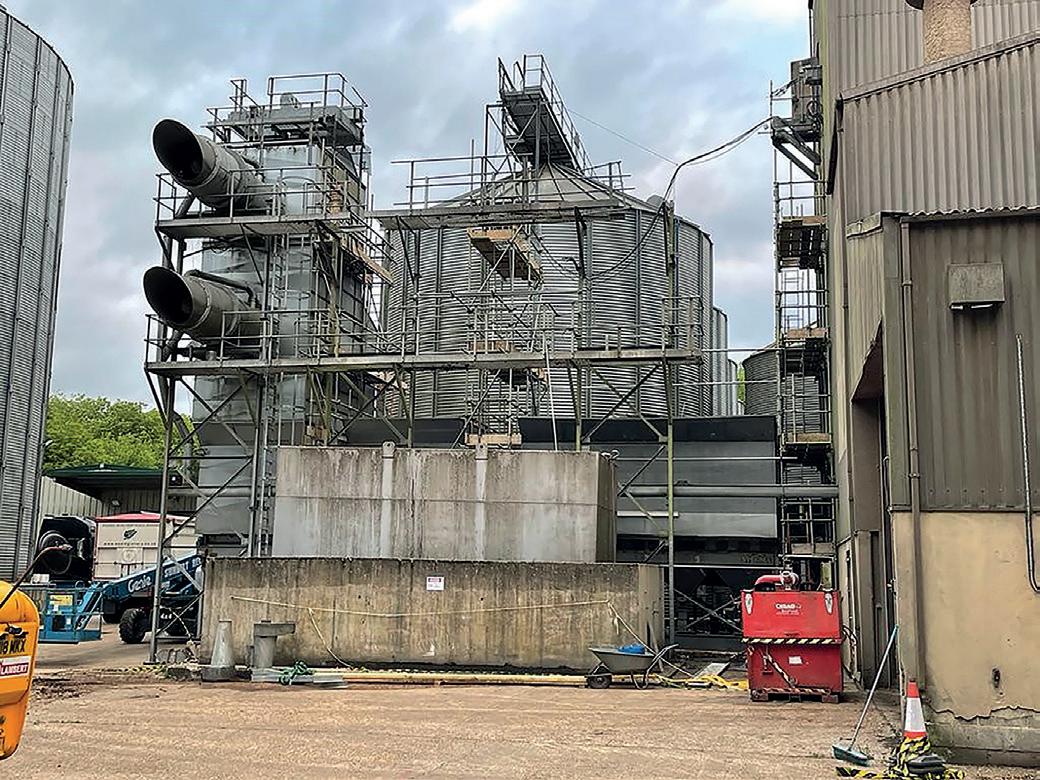
The proven design meant that the main body dimensions were identical and made changing components of the drier relatively straightforward. In addition, it was possible to reuse all of the handling equipment’s brackets.
“The new Svegma driers were installed just in time for harvest 2022 which turned out to be one of our driest and hottest so we only ended up drying 500t of wheat. But the driers had their baptism of fire in October when we needed to dry 1,500t of wet maize which came in at 30%.”
“As usual they did their job and did it well,” added Mr Smith. “The BDC team who worked on this project will most probably be, like me, well into our retirement by the time the new Svegma driers need replacing again.”
They did their job and did it wellWeald Granary
is run by farmers for farmers
Renewable energy was not possible on the very compact site
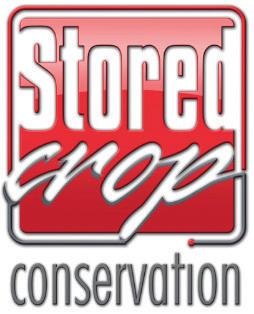
Aproject to reduce grassweeds by exploring harvest weed seed control is being undertaken with help from a Suffolk farm.
Previous research and experience in Canada and Australia has shown that seed control units (SCU) mounted on combine harvesters render 98% of seed that passes through the harvester unviable.

This project aims to help farmers establish reasonable expectation of what proportion of grassweeds are left standing at harvest.Working with Will Smith from NIAB, four farmers have fitted SCUs to test whether the devices work in UK conditions.

BOFIN network
The Seed Circle project is being run by the British On-Farm Innovation Network (BOFIN) – a group of growers and scientists who carry out their own on-farm trials and share the results, seeking scientifically robust ways to

improvefarm practice.
In Suffolk, Adam Driver noticed a build-up of blackgrass in the chaff lines behind his Claas Lexion 8800, running on a no-till 12/36m controlled-traffic farming system. His is also using the SCU to keep meadow brome in check.
Meanwhile in Warwickshire, Italian ryegrass is grassweed enemy number one for grower and Velcourt farm manager Ted Holmes, who has been trialling an SCU fitted to his New Holland CR9.90 combine.
NIAB has now developed a protocol for farmers to take their own preharvest representative sample so they don't have to wait for a weed scientist to come to the farm during the busy harvest period. Samples are sent to NIAB for assessment.
“There are two critical monitoring periods,” explains Mr Smith.
“First, we want to know the population of viable seed standing at har-


The Seed Circle projet is helping to reduce grass weeds postharvest
vest, which involves taking representative samples just before the combine goes through. Then we monitor what emerges into the following crop once autumn cultivations and drilling are complete.”
For Italian ryegrass the figures were 62% in Warwickshire in winter barley and 87% for spring barley. Testing found that a lot of the rygrass seed in the spring barley was unviable – possibly due to hot, dry conditions. For full details, visit bofin.org.uk

ALincolnshire grain processing specialist is working with an award-winning cheese-maker to remove imported soya bean meal from the diet of its 300-cow organic dairy herd.
Scunthorpe-based McArthur Agriculture develops, builds and maintains food and feed processing systems for the food supply chain. It is working with Somerset cheese-maker Godminster Farms to replace imported soya feed with home-grown roasted pulses.
Feeding trials suggest doing so will help Godminster Farms reduce its carbon footprint. The initiative is part of a Defra-funded project to help farm
tions by growing beans here on the farm,” says Peter Cheek, who manages the farm's 300-cow dairy herd.
Led by the Processors and Growers Research Organisation (PGRO), the project aims to increase pulse cropping in arable rotations – so livestock farmers can substitute up to 50% of imported soya meal with more climate-friendly home-grown pulses and legumes. McArthur Agriculture managing director John McArthur said: “Godminster Farm is already adding beans to its crop rotations for inclusion in its cows’ rations, working towards the replacement of imported soya bean meal in organic dairy.”
Mr Cheek met Mr McArthur for the first time at Groundswell in June 2022. The two men then visited Denmark together to see first-hand how Danish farms are already substituting imported soybean meal with roasted beans and cereals.
“Work there has shown the roasting process improved the quality of the protein in beans, allowing the formulation of diets without soya bean meal while maintaining milk yield and quality,” said Mr Cheek.
“I was staggered as to the results achieved by the Danish farmers. They
Pete Cheek manages 300-cows for cheese-maker Godminster Farms

were achieving double the milk yield we get at Godminster by including roasted beans in their cow’s diets and without using soya,” he added.
“One famer was conducting circular rations. He grew the beans, lupins, maize and cereal and fed them and sold the milk produced. He grew everything he wanted to feed his cows. Danish organic dairy farmers seem to have it sussed.”
On returning to the UK, Mr Cheek started processing beans post-harvest in late 2022. The trial was successful and he now plans to permanently include roasted beans in the ration and is considering adding roasted lupins for more protein.
“We roasted the beans with a Mecmar T05 roaster from McArthur Agriculture, they were then milled and incorporated into the cows’ diet as part of the parlour feed and in the total mixed ration,” he said.
“The next phase of our trial will be to roast the beans we are growing on-farm this year straight from the combine, rather than roasting beans we have bought-in, this will allow us to store them safely and increase the amount we are able to add to the rations.”
Roasting improves the protein quality


A Rumenco survey of scanners representing nearly 500,000 sheep across England, Scotland and Wales found last year’s scanning results to be back an average of 10-30%.
Scanning percentage decline was a result of widespread drought hurting both grass quality and availability. The data found early lambers were impacted the most, with the decrease in scanning results being a result of more singles, not more barrens.
While this summer saw little rainfall and high temperatures impact early grass production, the damp and cool weather pattern stretched across mid to late summer has put livestock producers in a unique position – potentially one of false confidence.
Looking at industry data, grass growth is well above the four-year average from mid-July onwards. However, quality has largely been below the previous three-year average since the start of 2023. While there is plenty of grass available going into the tupping season, it is essentially rumen fill with low nutritional value.

Metabolisable energy and protein and sugar levels have been below average having never fully recovered from last year’s drought. In 2022, grass averaged 11.11 ME and 19.2% protein. In 2023, grass averaged 11.06 ME and 18.2% protein – hitting its lowest ME of 10.3 in early July and lowest protein of 14.1% in late June. This is a concern, as it could have limited ewe body condition gain post-weaning. To gain one unit of BCS from weaning to tupping, ewes require grass to be at least 11 ME.




Grass sugar levels have also been significantly below average since last year, being nearly 50% lower in April and May. This will be limiting protein supply to ruminants, as the rumen microbes require sufficient fermentable energy in the form of starch and sugar to fully utilise the protein available in grass.


Stretching forage stocks and protecting lambing percentages with strategic supplementation


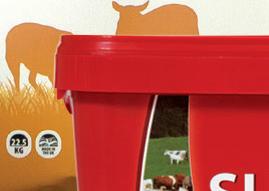



Anecdotally, scanners whose customers supplemented sheep last year felt their scanning percentages benefited from the additional nutrition. The decline in forage quality paired with the upcoming seasonal decline in availability is going to make strategic supplementation essential this tupping season to both stretch forage stocks and meet ewe nutrient demands.
A high energy and protein feed block like Rumevite Sheep Super Energy Plus Fish Oil will fill nutrient gaps while also boosting lambing percentage by up to 22% when fed in the eight weeks around tupping. The supplement block formulation helps ewes reach optimal body condition ahead of tupping, supporting ovulation – which can lead to more ewes holding service in the first cycle.
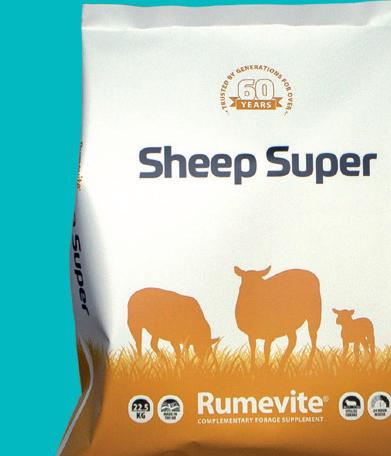

Rumevite is a multi-purpose product, also delivering daily requirements of minerals, vitamins and trace elements to boost livestock performance while supporting immunity, health and fertility. The combination of little and often feeding and increased saliva production from licking the hard pressed feed blocks provides a flow of nutrients through the rumen to support a healthy rumen bug population. This supports forage digestibility, ensuring stock makes the most of the grass or forage that they do have.




While there is plenty of grass available this year, farmers are going to have to provide additional supplementation to offset the low quality, and to fulfil ewe nutrient requirements for optimal scanning percentages. Using a multi-purpose supplement like Rumevite Sheep Super Energy Plus Fish Oil will pay dividends by increasing forage utilisation, delivering essential nutrients to ewes and boosting fertility.

Grass may be available, but the quality is not. As forage quality plummets, here’s how supplementation can support this year’s tupping success.

From direct drills to the low disturbance looseners, subsoilers and top tilth cultivators. Fentech Agri has a range of products in their catalogue to help establish seeds effectively and quickly.
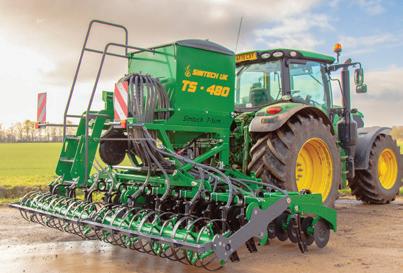

The company offers the renowned line of the Simtech direct drills with their proven T-slot tines. The drills are relatively simple, well-built, reliable and cost-effective, with minimal moving/wearing parts. These versatile machines will penetrate even very hard ground, while the renowned Tslot system creates a unique environment for the perfect seedling germination, even in the most demanding conditions. The drill range extends from 2.4m grass drills up to 6m folding arable drills.

Some of the new releases planned for 2024 include:
• new front mounted hopper models to allow wider drilling using less horsepower and more balanced loading of the tractor;
• a four toolbar frame for users with high trash conditions or application into cover crops;


• A trailed kit as an intermediate step from a fully mounted machine to a trailed machine;

• a lightweight folding drill with no rear spring flex roller
The company also offers ultra-low disturbance subsoiling products using Tillso tine technology, shallow annual or bi-annual restructuring by lifting and dropping the soil over



a wing to create vertical fissures for better root establishment. The tine has been developed to create minimal surface disturbance, this reduces the need for following cultivations, prevents weed seeds from being dropped throughout the soil profile and keeps fine soil particles on the surface. The “Advantage” is offered from 3m up to 6m, in both mounted and trailed formats with various optional extras.
Another key tool in the armoury is the “Commander” - a shallow tine cultivator which promotes the production of stale seedbeds. The machine is offered in 6, 8, 10 and 12m widths, with optional vertical tillage discs.
The business model revolves around soil health and reduction of inputs. The aim is to achieve maximum yields without high input costs, while at the same time, improving the soils for the future.
Twelve new varieties have been added to the British Society of Plant Breeder’s forage maize descriptive lists for 2024.
The lists describe the performance of different maize varieties across a range of locations. Sites are classi fied according to different factors –including length of growing season and spring soil temperatures.
Seven new entrants are on the Fa vourable First Choice list for sites with the longest growing season and warm er spring soils for early establishment. They are Skipper and Foxtrot (both Limagrain); Faith, Emeleen, Crosbey and ES Palladium (Grainseed); and SY Silverbull (Syngenta).
Five new entrants have been added to Favourable Second Choice list for the same site types. They are RGT Eas ixx and RGT Bluefoxx (both RAGT), KWS Resolvo (KWS), Glencoe and LG31207 (both Limagrain).
Three varieties – Skipper, Faith and SY Silverbull – also feature on the Less Favourable First Choice list for sites with shorter, cooler growing seasons. The Less Favourable Second Choice list includes Foxtrot, RGT Easixx, RGT Bluefoxx and KWS Resolvo.
Meanwhile, LG31207 has been added to the Very Favourable list for sites with a long growing season and very favourable conditions suitable for later maturing varieties with high yield potential to maximise output as a feedstock for anaerobic digesters.
Of the new earlier maturing varieties, BSPB variety trials co-ordinator Jeremy Widdowson says Faith is the highest yielding on the Favourable site list. It achieved a dry matter yield of 19t/ha, with a metabolisable energy (ME) of 222kMJ/ha and starch at 6.47t/ha.
Not far behind is Skipper with a DM yield of 18.8t/ha, ME of 221kMJ/ha and starch at 6.74t/ha.
Then came Foxtrot with a DM yield of 18.7t/ha, ME of 222 kMJ/ha and
Varieties are assessed across a variety of locations [Picture: Natascha Kaukorat / Shutterstock.com]
starch at 6.54t/ha.
Based on limited data, all three varieties show some susceptibility to eyespot, so may be less suitable in damper growing conditions. ES Palladium is the highest DM yielding of the later maturity varieties at 19.4t/ha and ME of 223 kMJ/ha.
On Less Favourable sites, Skipper, Foxtrot and RGT Easixx sit just behind Faith, yielding 18.5t/ha at 35.2% DM with good early vigour and starch at 6.62t/ha. Based on limited data, SY Silverbull has an eyespot rating of 6.1 – the highest of the new varieties for this List.
The single variety added to the Very Favourable site list – LG31207 – has good early vigour and good standing power with a dry matter yield of 18.7t/ ha. It also has a good ME yield, which is an important factor for achieving high biogas yields.

The forage maize descriptive lists for 2024 are available for download from the BSPB website at www.bspb.co.uk.
Independent trials for forage maize varieties are organised by the British Society of Plant Breeder's forage maize crop group. This helps meet the legal requirement that all maize varieties sold in the UK must be tested in UK growing conditions and accepted on the UK national list – with a minimum of two years of robust trials data from six locations across England.
Only UK national list varieties can be entered into the descriptive list trials programme and can be published after an additional year of trials across nine sites. The forage maize descriptive list helps growers select the most appropriate variety for their location.
The list is reviewed annually by a panel of farmers, breeders, nutritionists and agronomists, ensuring rigorous, independent evaluation of the varieties to support the resilience of forage systems within the changeable UK climate.
Parameters include dry matter yield and ME yield as well as starch percentage and cell wall digestibility. Scores for early vigour, standing power and eyespot resistance are useful for sites with more challenging growing conditions and a high risk of lodging or eyespot.
Trials are carried out by NIAB and plant breeders under contract to BSPB. All trials are independently inspected to ensure compliance with protocol and high standards of trialling and the data are independently verified and analysed by NIAB.
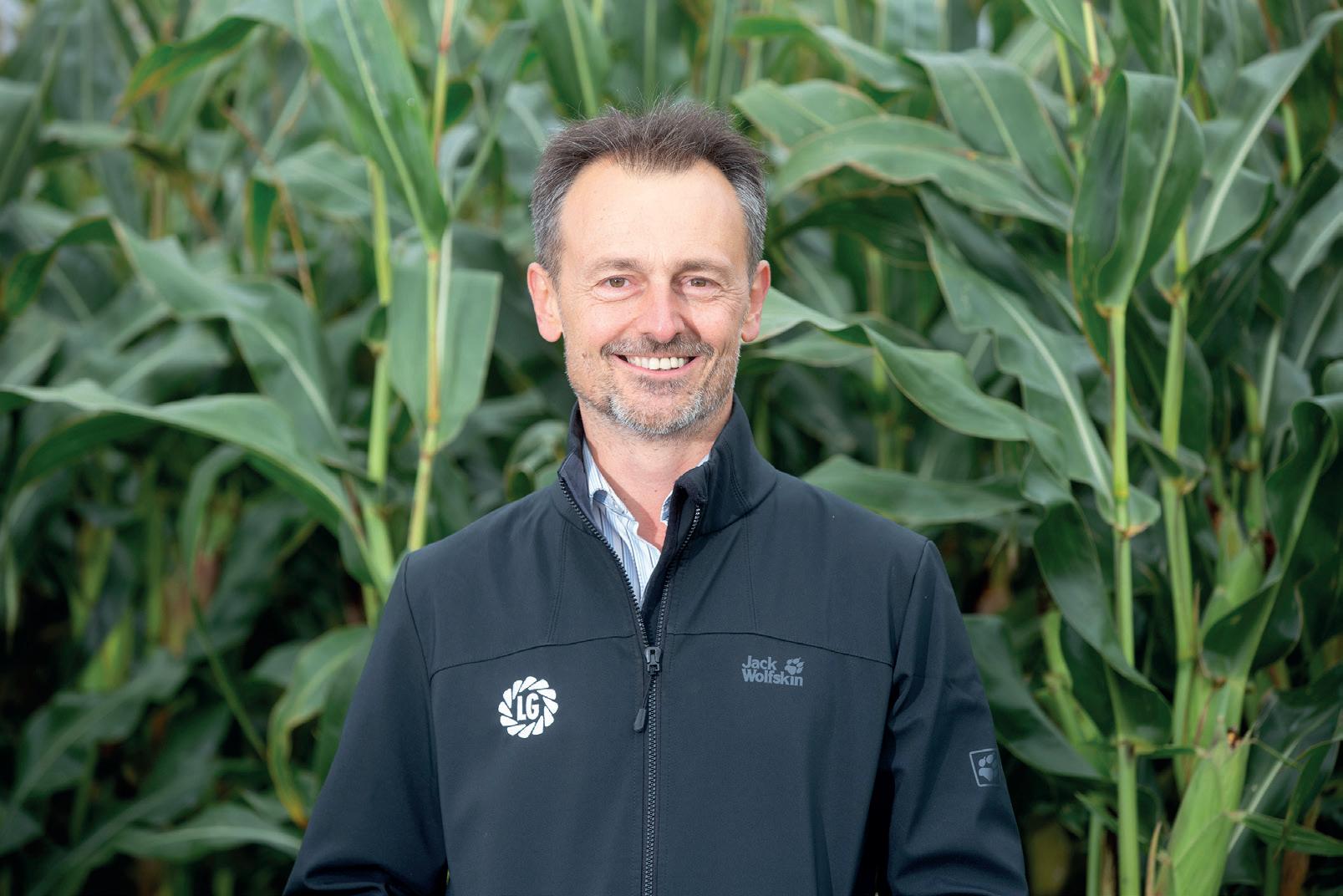
Three new forage maize varieties from Limagrain have been add ed to the BSPB/NIAB Descrip tive List for 2023-24.
The list compares major maize vari eties across the key growing locations of the UK. Comparisons are made on crop dry matter, crop yield, agronom ic data such as lodging, and quality characteristics of starch and energy.
Two very early maturing Lima grain varieties – Skipper and Foxtrot – sit atop the new list of first choice va rieties for favourable sites. The third variety – later maturing LG31207 –tops the list for very favourable sites.
Suitable sites
Skipper and Foxtrot are ranked num bers one and two respectively as first choice varieties for starch yield on favourable sites. Meanwhile, while LG31207 tops the chart for ME yield for varieties suited to very favoura ble sites.
Skipper is ideal for farmers who want to fill their clamps with a very early maturing crop of exceptionally
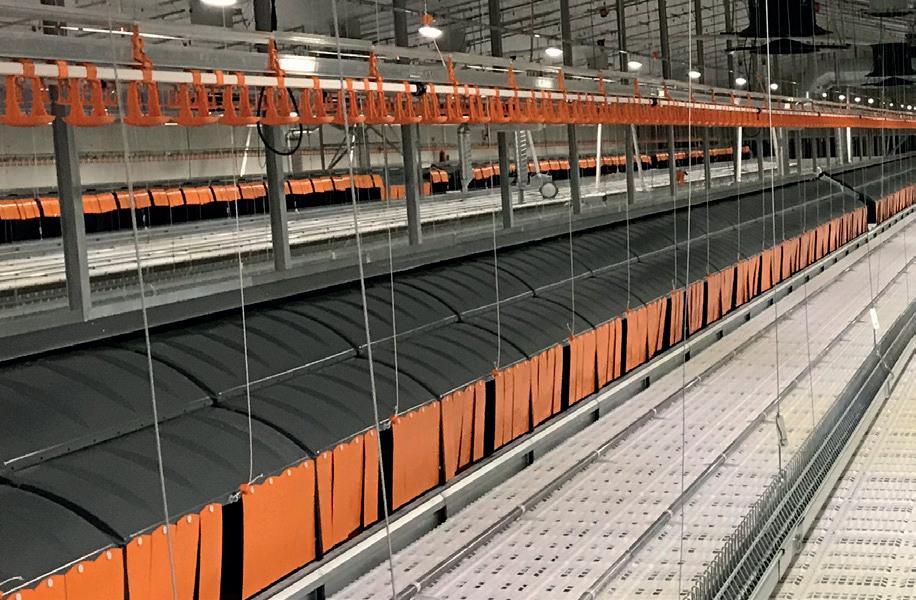
• Single and double tier nests guarantee hatching eggs of the highest quality

• High nest acceptance due to optimum entrance height
• Separate inspection cover for easy monitoring
• Optimum hygiene due to clever, wood-free nest design
• Egg belt with triangular holes reduce egg contact
• High egg quality transport of the eggs

Grants
• For new and refurbished buildings
• Goal to boost health and welfare
Agovernment fund for new or refurbished calf housing has opened for applications from beef and dairy producers.
The Calf Housing for Health and Welfare fund offers grants ranging from £15,000 to £500,000. It covers up to 40% of the cost of calf housing and buildings which improve health and welfare for beef and dairy calves.
For the purposes of the grant, the term ‘calf’ refers to domestic cattle up to six months old.
Grant funded calf housing must provide a good ambient environment and facilitate social contact through pair or group housing, says Defra.
The government says good ambient environment must ensure good air quality, temperature, and humidity within the building through choice of
suitable location, ventilation and other building features.
Successful projects will improve calf health and welfare, enhance environmental sustainability and introduce innovation on the farm, says Defra. “If your project meets all these priorities, it’s more likely to be accepted,” it adds.

Eligible applicants must be existing cattle farmers, including calf rearers, with 11 or more cattle. Any buildings which are built or upgraded with money from the grant must be located in England.
“You must either own the land you’re building on or have a tenancy agreement for the land until five years after the project is complete,” says Defra. “You can apply if your current agreement will end sooner than five years after the project, if you expect it to continue.
Grant must be used solely for the purposes of businesses in England.
Grant funding must not be used to cross-subsidise any related, linked, parent, subsidiary, partnership, joint venture businesses or operations based in Northern Ireland.
The grant is part of Defra's Animal Health and Welfare Pathway. The animal health and welfare priorities it seeks to deliver for the cattle sector have been agreed with industry representatives.
For youngstock, priorities include improving pain management during disbudding, dehorning and castration – as well as the greater adoption of prolonged analgesia to improve the calf welfare and performance.
Defra says many farm buildings are not optimally designed for cattle – especially calves. It has pledged to encourage improvements in ventilation, cow comfort, loafing areas and enrichments such as scratching brushes.
In terms of adult cattle, priorities include improving the welfare of cattle at pasture through upgrading shelter, drainage, gateways and tracks that support the normal behaviours associated with grazing and being outdoors.
Potential applications can check their eligibility online at www.bit. ly/calfhousing. The fund will stayopen until the end of November.
“ Projects must improve health and welfare

Livestock producers are being advised to increase hygiene levels in cattle enclosures and calving equipment to prevent unnecessary calf losses this winter.



Winter calving can present farmers with a host of environmental challenges, with colder temperatures threatening the survival of weaker animals, the increased risk of disease, and reduced daylight hours.
of the easiest ways to reduce calf losses throughout the winter season,” says Mr Barnard. To effectively use disinfectant in your cleaning routine, he suggests the following approach:
Right: Care should be taken to protect vulnerable calves from disease
1
“A focus on hygiene is one of the simplest and most economical ways to reduce the spread of disease and promote healthy conditions throughout cattle housing, says BASF business manager Laurence Barnard.

spread of disease and tions throughout cat-











Thoroughly disinfect all cattle housing and cubicles regularly. First, remove dung, straw and shaving. Soak all surfaces of the housing with a solution of detergent and leave it for fifteen to twenty minutes. Wash surfaces with clean, cold water using a pressure washer, then spray a solution of disinfectant. Surfaces should be treated to the point of run off of the solution, and should remain wet for at least one hour.







Once dry, restock with fresh straw and housing may be restocked immediately.
Left: Disinfectant is a simple way to reduce mortality, says Laurence Barnard.
More frequent and thorough use of disinfectants is one

More frequent and





2 Before calving begins, ensure any sick cows or heifers are penned separately from the main herd. Similarly, once calving begins any animals that show signs of
disease or illness should also be separated and treated accordingly, to help contain the spread of disease and reduce the risk of contaminating other cattle.
3 Bacteria, viruses and other micro-organisms are often present on clothing and boots. People working with animals
of any kind should wear clean overalls and dip boots in disinfectant to reduce the risk of introducing harmful diseases.
Before entering the shed, it is also good practice to wash hands with an anti-bacterial soap, especially when examining cows or calves and assisting with calving, and
always wear a fresh pair of OB sleeves.
4 Any equipment that is being used in conjunction with calving should be disinfected before being used.

Farmers should use a clean bucket and a solution of 1:200 of disinfectant to soak everything from suction bulbs and syringes to a calf puller and bottles. Solutions should be changed frequently to prevent the build-up of bacteria.
Disinfectants like Sorgene Xtra – a Defra-approved, broad spectrum environmental disinfectant – can be used for general hygiene, spraying or specific disease control depending on the concentration used and application techniques.
It can be used at 1:250 for general hygiene, and at 1:100 for specific disease control, for foot dips and vehicle spraying. It breaks down after use and leaves no residue, so no rinsing is necessary, and all housing can be re-stocked immediately after application.

These simple steps and effective tools will help reduce the spread of disease that may result in unnecessary calf losses and prevent farmers suffering substantial financial losses, as well as protect their cows, says Mr Barnard.





Dairy farmers and herd managers are invited to attend a special workshop aimed at making the most of milk recording data. The workshop will discuss ways data can be used to realise the untapped potential in dairy herds. Hosted by the Agriculture and Horticulture Development Board, the event takes place on 11 October at Macclesfield RUFC, Priory Park, Macclesfield.

Workshop participants will walk away with a tailored report that will take their breeding decisions to the next level. This will include create clear breeding goals tailored to their farm's requirements
The event will also help milk producers identify their herd's baseline and identify areas for improvement – including ways to evaluate data.
The workshop is designed for anyone with a milk recorded herd who wants to be more actively involved in their breeding strategy. For more information, please visit www. ahdb.org.uk or contact your local AHDB Knowledge Exchange Manager.
Optimising feed resources and want maximum value from silages? It’s vital to know nutritional quality of forage, using that to formulate feed rations to optimise production, e cient feed use and minimise adverse e ects on the environment.

Feed Adviser Register (FAR) members provide professional support and quality feeding advice. With strict entry criteria to join FAR, based upon training and experience, Advisers must complete core training and competency tests to become full members of the Register and membership is renewed annually requiring continuous professional development.


Over 1,200 feed advisers from all over the UK are registered, providing advice for ruminants, pigs, poultry and game.


FAR Advisers rely on consistent information from nutritional analysis of feed materials including silage throughout the feeding season. e Forage Analysis Assurance (FAA) Group exists to ensure that analysis is accurate and consistent. Members complete regular pro ciency tests to ensure reliable quality results for customers.
Visit our website, www.faagroup.co.uk to nd out more about our members, check their analysis performance and learn best practice farm sampling techniques for silage bales and clamps.
A forage analysis report with the FAA quality assured mark, means you and your feed adviser can have con dence in those results and plan your winter feeding rations.

MOBILE FEED MILLING AND MIXING SERVICES FOR ALL BREEDS OF ANIMALS AND POULTRY

WE PROVIDE MOBILE FEED MILLING AND MIXING SERVICES FOR ALL BREEDS OF ANIMALS AND POULTRY, FROM STRAIGHT ROLLED CEREALS OR HAMMERMILLED PULSES TO COMPLETE MIXED RATIONS AND FEED BIN TRANSFERS.
With numerous suction and discharge options including directly into feed bins or separate bunkers, we are able to provide an efficient, traceable and consistently high standard of service for our customers.

Based in the West Midlands we run a fleet of modern ‘Tropper’ machines specifically built for precise mixing and accurate weighing operated by our experienced, friendly drivers.
To discuss your farm’s requirements please give us a call on:
James - 07584 582 598
Glyn on 07976 548766 / 01568 750 183

E: info@glynhamermillmix.co.uk
W: www.glynhamermillmix.co.uk
Dairy farmers are being urged to start planning now for winter feeding to ensure cows receive consistent rations and achieve optimum milk yields.
With varying silage quality experienced this year, nutrition experts say it is important for dairy farmers to undertake analysis of their forages to gain an accurate picture of the quality of their silages.
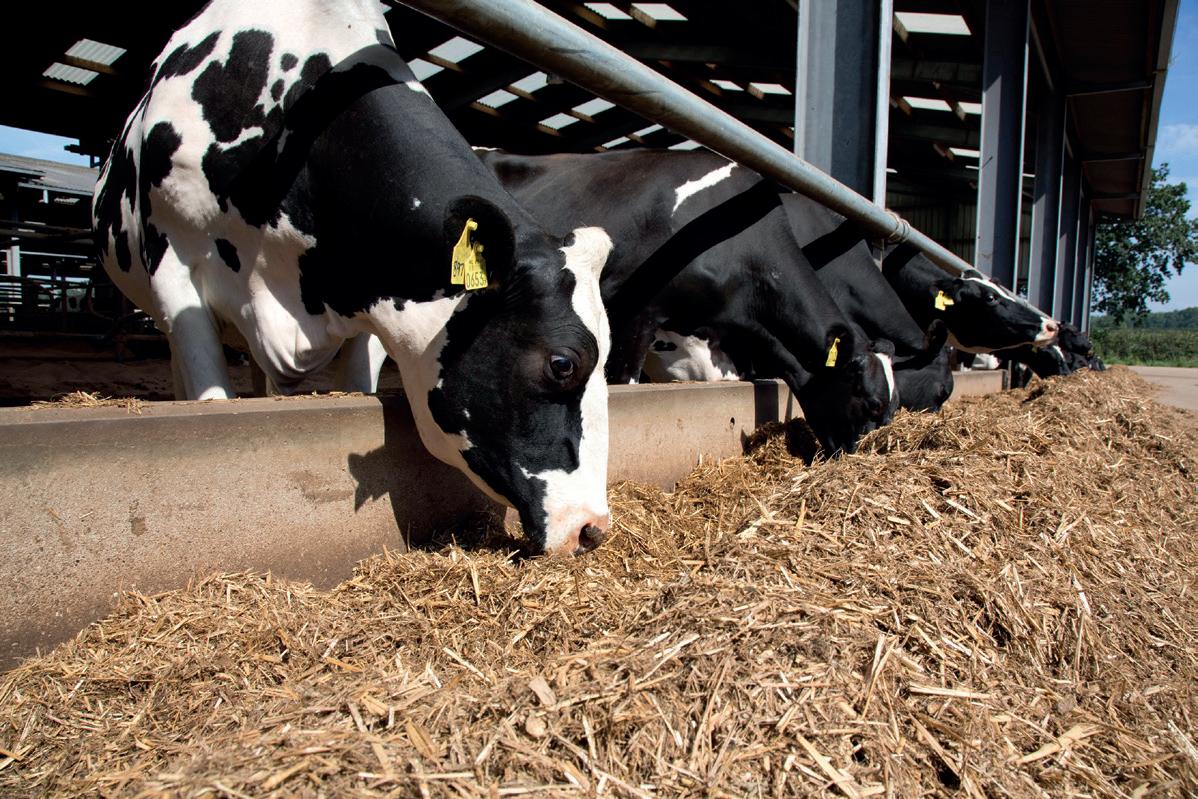
"Measuring silage clamps and assessing the quantity of forages available to them is equally important," says Csaba Adamik, livestock nutrition manager for Lallemand Animal Nutrition.
Once farmers are aware of their silage quality and quality, they can plan ahead to ensure their rations are balanced to meet their cows' needs throughout the winter months, explains Mr Adamik.
“It should help them to achieve optimum

mentally sustainable manner. Where silage quality changes throughout winter, rations should be reformulated to maintain optimum nutrient levels."
Clamp management Farmers should pay close attention to clamp management and aim to feed a consistent ration every day. To minimise waste, producers should feed out in a vertical column from the clamp to ensure silage quality is consist-
"Producers should also aim to move across the whole clamp face in less than three or four























“In case of very wide clamp faces, taking shallower grabs, rather than full grabs will help to avoid silage being exposed to oxygen for too long, as that can affect aerobic sta-



Mr Adamik says how the ration is delivered, should be another area of focus. "Feeding out wagon mix rations between milkings, and not at milking time, increases feeding bouts and can improve feed efficiency by as
"In addition, pushing feed up regularly and feeding twice a day or more increases dry matter intakes, reduces sorting, and leads to increased lying time and improved rumi-
Feeding a rumen-specific live yeast, like Levucell SC, can help balance rations while delivering environmental benefits. The yeast optimises rumen function, increasing ration digestibility and feed efficiency so cows get more from available feed.
"Studies have shown that inclusion of the live yeast in rations improves feed efficiency by 3-6% in lactation and subsequently reduces the carbon footprint of milk production by up to 6%,” says Mr Adamik.







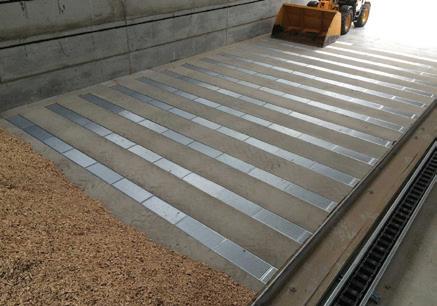








The future of farm management will be debated at a major agricultural conference in London next month.
Organised by the Institute of Agricultural Management (IAgrM), the National Farm Management Conference will see a host of top speakers take to the stage on Tuesday, 7 November at the QEII Centre, Westminster.

The conference title this year is ‘What is the farm for? Technology v Tradition: The Future of Agricultural & Environmental Management’. It will explore how the twin strategies of regenerative agriculture and the use of modern agri-tech can work together.
Food production
IAgrM national director Victoria Bywater said: “Are we going to have farms that produce lots of food, or farms that respond to the public goods for public services? What is a farm for? Is it there to produce food or public services?”
It is hoped the conference will help answer these key questions and look at how food production and environmental protection can work to solve two of the most critical issues facing humanity: climate change and biodiversity loss.
The packed one-day event comprises of a stellar line-up of speakers from across the industry and includes:
• Opening the conference, Professor Sir Charles Godfray, from Oxford University, will talk about how agriculture is both a problem and solution for climate change
• Sam Hall, director of the Conservative Environment Network, will then discuss how farmers can stop and reverse biodiversity loss caused by intensive agriculture
• Will Jennings, the CEO of Rabobank in the UK will give a macroeconomic overview of the situation in farming and supply chain industries
• Representatives from the food supply chain have also been invited to discuss how regenerative food production might affect procurement policies, with Joseph Keating, Co-op agricul-
ture manager, leading this session. Also on the agenda regenerative farmers Paul Carrott, Will Oliver and Paul Cherry. Agronomists Ed Brown, head of agroecology at Hutchinsons,
technology and data plays in agriculture – and the opportunities and challenges it presents – as well as the barriers preventing farmers the adoption of new technology.
IAgrM chairman Carl Atkin-House says: “We have a fantastic line-up of speakers throughout the day. For farmers and ancillary industries involved in agriculture and food, this conference is not to be missed.
“It will address one of the burning questions on everyone’s lips and look at how agriculture can maintain food pro-
New guidance could prove helpful for landowners and farmers hoping to divert or extinguish a footpath because of privacy, safety and security concerns.
The Defra guidance sets out how local authorities should give weight to the adverse impact of a public right of way on a landowner if the route passes through the garden or curtilage of a private house, a farmyard or commercial premises.
Lengthy process
Diverting a footpath is a notoriously long and complicated process and one which can come with significant costs if there is opposition,” says Charles Loyd, senior director in Strutt & Parker's Ipswich office.
“This new guidance is very helpful because it makes clear to local authorities that the impact of the route of a footpath – in terms of a landowner’s privacy, security and safety – is an important consideration, which must be given weight when coming to a decision.
“The circumstances under which landowners will be able to benefit from this new guidance are fairly limited – but it does mean local authorities will be obliged to take a more practical approach in instances where rights of way go through the middle of a farmyard.”
Before agreeing to any changes, the local authority will need to consider all the options available and wherever possible will be looking to divert or replace the right of way, rather than close it.
The Royal Agricultural Society of England has named farm conservationist Alastair Leake as the recipient of its 2023 National Agricultural Award.
The award recognises Dr Leake's outstanding contribution to British agriculture through his work leading the Allerton Project – the Game & Wildlife Conservation Trust demonstration farm which showcases how commercial farming and biodiversity can co-exist.
The award is given annually to an individual who has made a significant impact on the advancement of UK agriculture. Dr Leake has led the Allerton Project for 22 years, researching the effects of different farming methods on biodiversity.
Located on the Loddington Estate in Leicestershire, the Allerton Project has attracted thousands of visitors – including farmers, government ministers, Defra policy makers, researchers and students – who have learned from its innovative practices.
Award judges praised Dr Leake for his tireless efforts to discover and communicate how agricultural production systems can allow for high levels of food production and biodiversity to occur simultaneously.
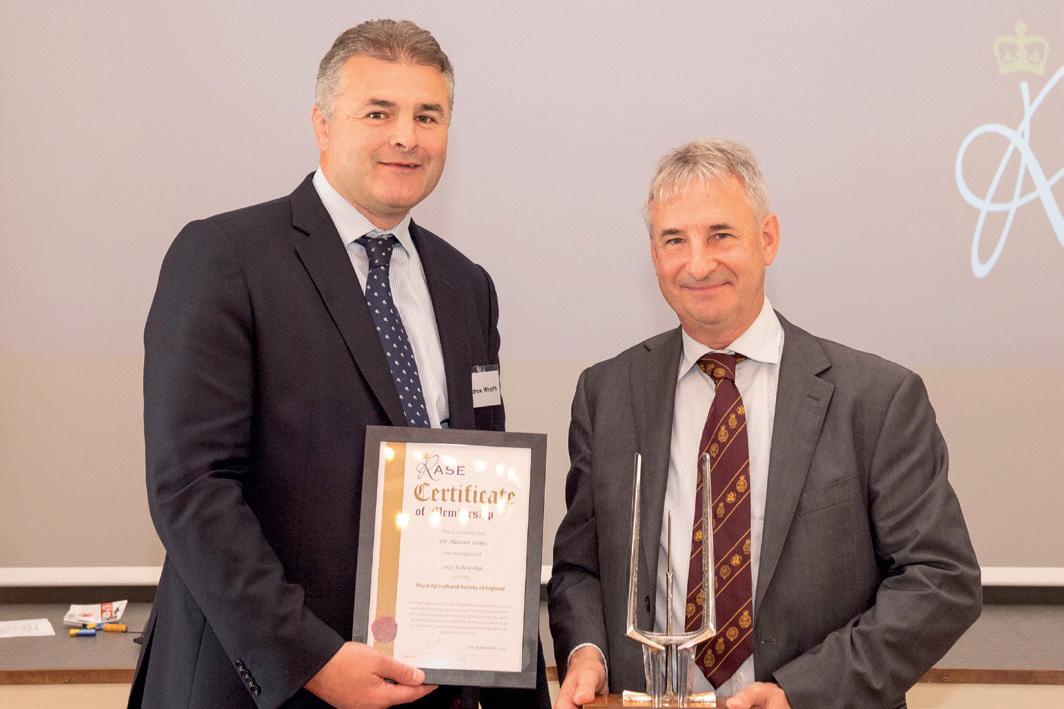
RASE chief executive David Grint said “Alasiair has made an extraordinary contribution to British agriculture through his work leading the Allerton Project, which has done so much to pioneer and popularise ways of farming with nature.”
Dr Leake said he was “humbled, honoured and thrilled” to receive the award. He added:
Lincolnshire horticultural grower Bridge Farm Group has entered a new phase of growth after securing a multi-million-pound refinancing package.
Bridge Farm, based in Spalding in Lincolnshire, produces ornamental plants and cut flowers. It grows more than 70m plants and flowers annually in 24ha of low-carbon biomass-heated glasshouses – supplying supermarkets and DIY retailers.
Established in 1988, the business has a £30m annual turnover and 160 employees. A competitive debt raising process by FRP Corporate Finance to identify a partner to support the next phase of Bridge Farm's growth plans.
“I have been fortunate to have worked alongside some outstanding colleagues through my 30 years of involvement with agricultural and environmental trials.”
The gift of the Loddington Estate by the late Lord and Lady Allerton and their vision for the Allerton Project was inspiring. “Never before has it been so important for us to find ways to grow our food and protect nature and the environment simultaneously.”
The multi-million-pound refinancing package will support Bridge Farm’s ongoing expansion and enable it to continue producing its extensive range of high-quality plants and cut flowers while also penetrating the market for plant-derived extracts and molecules.
The deal was completed with support from advisers Shoosmiths, EY and Savills.
Bridge Farm managing director Louise Motala said: “This deal represents another key milestone for Bridge Farm as we continue to expand and build value in the business.”
Professional training standards body BASIS has signed up the 1000th member to join the National Register of Sprayer Operators (NRoSO) scheme this year.
The scheme provides sprayer operators with Continuing Professional Development (CPD) qualifications. It is a milestone moment for BASIS, which took over management of the central register in January.
NRoSO manager Andy Lister said: "Sprayer operators are a vital cog in the agricultural industry, with a huge responsibility in helping protect and grow our food supply chain through the correct and accurate use of pesticides and fertilisers.”
"By providing a platform for them to access training, qualifications and stay up to date with the latest application techniques, technology, plant protection products and environmental protection, NRoSO plays an important part in growing the skills required.”
In total, there are now 21,000 people on the NRoSO register. Adding 1000 people this year showed that the industry is aware of the challenges sprayer operators face, such as changes in legislation and increased output costs, said Mr Lister.
The 1000th member to join NRoSO this year was Adrian Hackett, whose spraying career began on his family farm. He now works for ValeFresco Salad growers in Evesham, Worcestershire.

Shropshire-based land agent Halls has strengthened two of its divisions by recruiting graduate surveyors.

Kate Oakes, 22, from Penkridge, joins the rural professional team led by Halls’ associate director Louise Preece at the firm’s Shrewsbury headquarters. At the same time, Ellie Studley, 21, from Malpas, joins the commercial team led by James Evans.


Ms Oakes won two awards as she graduated with a first class honours degree in rural enterprise and land management from Harper Adams University. A keen horse rider, she owns a small flock of award-winning Poll Dorset sheep.
Compulsory purchase
Ms Oakes said she was looking forward to securing new business while supporting existing clients. “I am particularly interested in compulsory purchase and landlord and tenant matters, as well as new environmental and grant schemes.”


Ms Studley is a real estate graduate from Liverpool John Moores University. Also a keen horse rider, she has experience as a British eventer and comes from a dairy and beef farming background
“This is the ideal job for me because my
advantage of new business opportunities.”
tage of emerging business opportunities.”

It’s become typical for a British summer – constant showers all harvest with some grain combined wet despite my best efforts not to cut anything over 15% moisture between the rain.
Then, as soon as the cereal harvest has finished and the kids are back at school, a high pressure weather system set in and everyday brings cloudless skies and a record-breaking heatwave with temperatures over 30º celsius.
Somewhat through gritted teeth, the Agriculture and Horticulture Development Board has been comparing the cost of drying grain against the cost of leaving the crop in the field to dry naturally.
Levy hike
With rumours swirling that a levy hike is in the offing, it’s galling to suggest to us farmers that we cannot add up and decide whether to combine wet or leave the crop in the field for a little longer.
If i could organise a high pressure system at the drop of a hat, I probably would not have entered farming and put my God-given climate control talents to better use. Or make it rain on a neighbour when I see him combining because he missed the last shower
Looking a bit closer at the AHDB website, I notice the cereals and oilseeds sector board


includes a member who farms not a million acres away from me. He’s a lot younger than I am – which is my current bone of contention.

In today’s farming world, what is the difference between 30-year-olds and us old forgotten farmers over 60? The answer is technology and common sense. Youngers have more of the former – whereas we older ones have more of the latter.
I would like to think that the advice I could give to hard-pressed farmers would be practical and with some knowledge of proper farming.
I have not had the business grounding of multi-national companies or a degrees in economics. But neither do I state the bloody obvious. I farm from the ground up – not from a laptop with colour-coded photos of each field in the order they must be cut.
Things like time of drilling and whether a crop is standing or lodged don’t seem to apply any more. In fact, in today’s carbon farming world demanding little or no cultivation, is there even room for us older farmers?
Today’s growers out in the field need an accountable levy board that offers good advice and somehow good value for money. But these modern laptop drive-by farmers have
too much time on their hands and very little practical farming experience.
When you consider the remuneration to AHDB board members, it is perhaps little wonder that cash-strapped farmers bemoan at the amounts paid to people for doing a 36-day-a-year job.
Of course the recommended lists are always valued and worth a read. But you have to wonder whether this justifies the levy imposed on growers.
It is very easy to talk good practice but can some of these experts put words into practice on their own farms?
From what I have seen, the answer is a questionable ‘no’ at best.
Past generations were able to make a successful living from farming. But their knowledge seems not to have been passed down to the next generation.
Farming today seems to be run by people driving the sector into an advice-driven deep hole. Farmers who thrive without an outside are becoming less common. But it is still possible – albeit for how much longer?

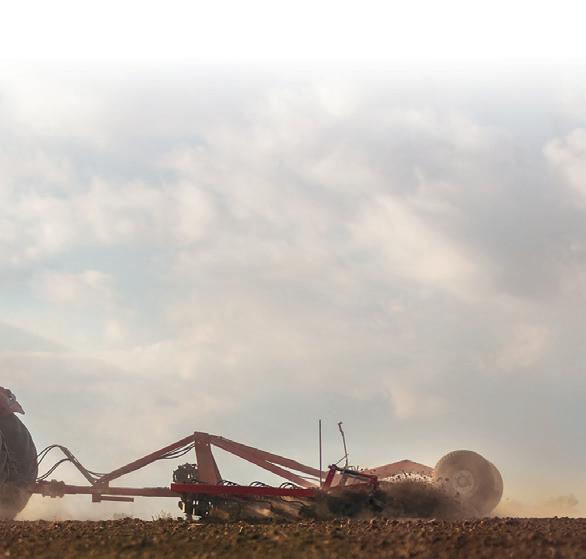
Indeed, most of us practical farmers are over 60, with fewer years to carry on and change our farming practice.

The difference




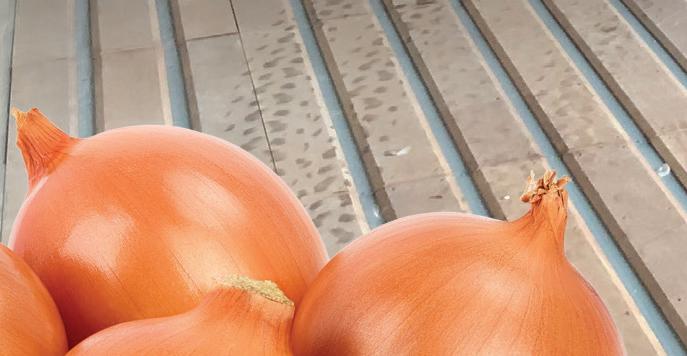


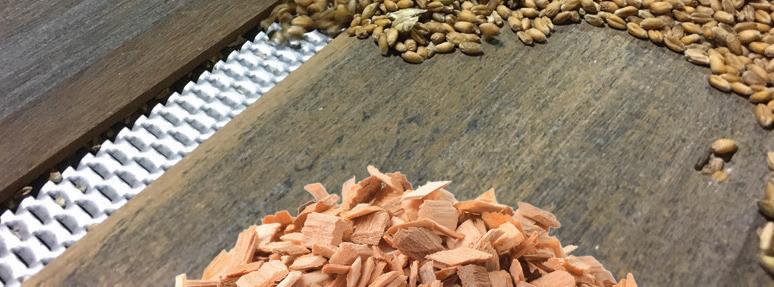

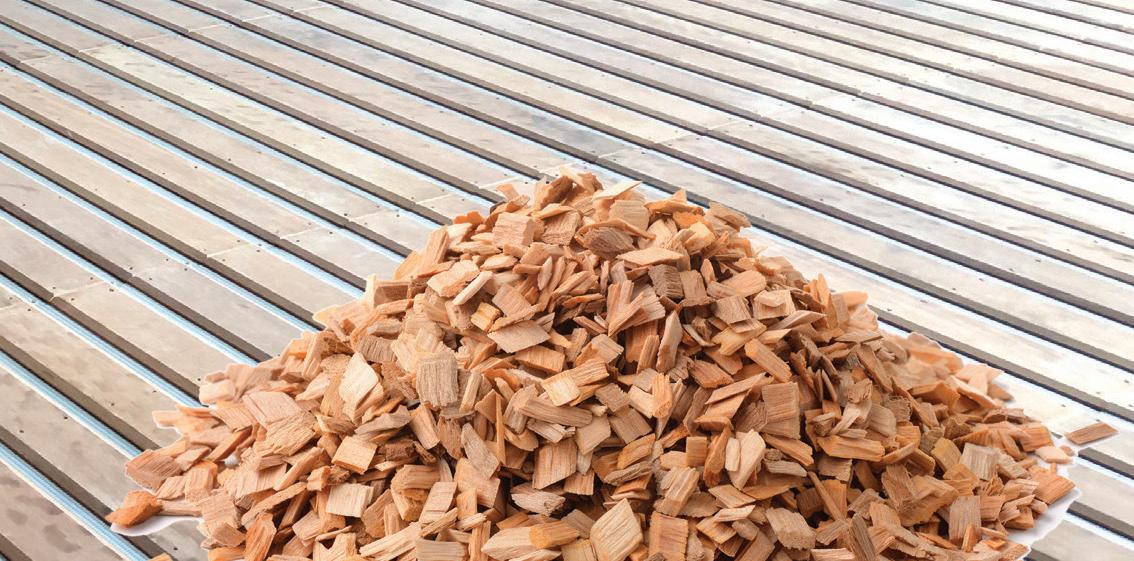
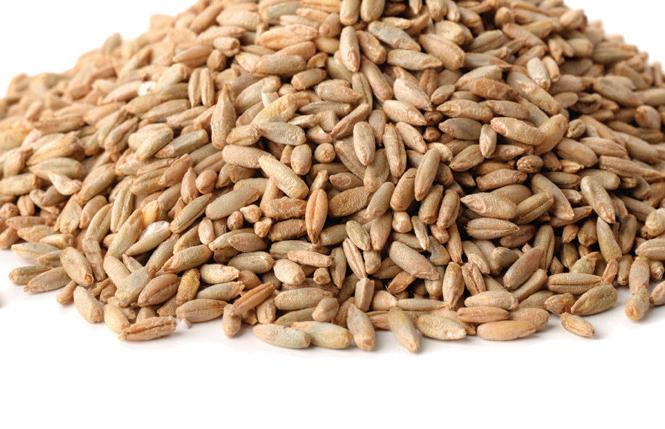







Flach
Email:
